Brynmawr is a market town situated in the historic county of Breconshire and is now part of Blaenau Gwent. The town is situated at the head of the South Wales Valleys and grew with the development of the local coal mining and iron industries in the early 19th century from its original settlement, which was named Gwaun Helygen, which sat on the border between the counties of Monmouthshire and Breconshire. The original village lay on the turnpike road from Abergavenny to Merthyr Tydfil and was surrounded with areas rich in coal deposits. With the development of Nantyglo ironworks, Gwaun Helygen was chosen as an ideal area for a settlement and houses sprang up rapidly to cope with the influx of workers. The men and women of Brynmawr who fell during both World Wars are commemorated on the Brynmawr Cenotaph, which is situated in Market Street, however inside St. Mary’s Church in Brynmawr is the original memorial to the fallen Parishioners of the Great War. This page commemorates those men named on this St. Mary’s Memorial.
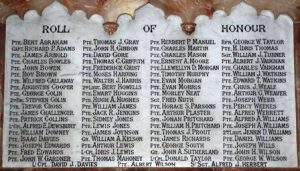
The Great War, 1914-1918
Bert Abraham, Private, 28376, South Wales Borderers. Bert was born in 1896, the son of Philip Abraham and Elizabeth Abraham (nee James), of 25, Gladstone Street, Brynmawr. He worked as a coal miner prior to enlisting at Brynmawr into the South Wales Borderers during the summer of 1915. Bert was drafted to Salonika during the spring of 1916, joining the 7th Battalion, South Wales Borderers, which was attached to 67 Brigade, 22nd Division. Large battles were fought in August 1916, at the battle of Horseshoe Hill, then in September 1916 at the battle of Machukovo. Between 24 April and 9 May 1917, the Division fought at the battle of Doiran, but no gains were made by the Allies, so both sides remained stagnant over the coming months. Bert contracted malaria soon afterwards and died at a Casualty Clearing Station on 13 August 1917. The 21-year-old was buried in Sarigol Military Cemetery, Kriston, Greece.
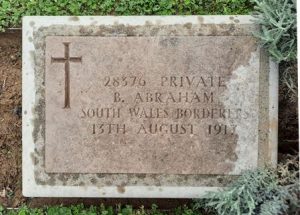
Richard Percy Adams, Captain, South Wales Borderers. Richard was born in Brynmawr in 1865, the son of Hannah Adams. He studied to become a teacher before taking up a post at Brynmawr County School, and became a member of the local Volunteer Battalion, South Wales Borderers. In 1908, following the creation of the Territorial Army, Richard transferred to the newly formed Brecknockshire Battalion, South Wales Borderers and he regularly attended every annual TA summer camp over the coming years. Richard resided at 201, King Street, Brynmawr, and was commissioned as Second Lieutenant into the Brecknocks just prior to the war. The battalion was attached to the Welsh Division and moved to Pembroke Dock upon mobilisation. It was then withdrawn from the Division, entraining at Neyland, and on 29 October 1914 sailed from Southampton for Bombay aboard the SS Dilwari, where the battalion transhipped and sailed for Aden, arriving on 16 December 1914. The battalion endured a torrid time in the heat of Aden, losing several men to heatstroke. In August 1915 the battalion moved to India on garrison duties and remained there for the duration of the war. By the time that the Brecknocks returned home, Richard had gained the rank of Captain, however his health had broken down and he was suffering from the long-lasting effects of dysentery, resigning his commission as a result in January 1921. Richard’s health continued to wane after the war and he died in hospital at Neath on 7 January 1922, aged 61.
James Arnold, Private, 2343, Monmouthshire Regiment. James was born in Blackwood in 1896, the son of James Allen Arnold and Caroline Ann Arnold (nee Whitcombe). The family moved to 170, King Street, Brynmawr by 1901, before settling at 12, Hill Street, Brynmawr. James worked for his father as a grocers assistant prior to enlisting at Abergavenny into the 3rd Battalion, Monmouthshire Regiment. The battalion mobilised at Abergavenny attached to the Welsh Border Brigade, Welsh Division, before moving to Pembroke Dock. On 10 August 1914 the Division moved to Oswestry before moving to Northampton, then spent Christmas at Bury St. Edmunds before moving to Cambridge. In February 1915 the 3rd Monmouth’s left the Welsh Division and landed in France on 14 February, before moving to the Ypres Salient. On 3 March 1915 the battalion joined 83 Brigade, 28th Division. On 8 April the 3rd Monmouth’s relieved a French Division in the sector east of the Polygon Wood to begin its first tour in the trenches. The battalion was relieved four days later, and marched to billets in Ypres, then on 17 April relieved the 5th King’s Own in the front line, to begin a spell which would last for 17 days without relief. On 22 April, just to the north, the Germans launched the first gas attack of the war upon French Colonial troops at Gravenstafel, heralding the opening of the Second Battle of Ypres. James was killed near Polygon Wood on 26 April 1915. The 18-year-old has no known grave and is commemorated on the Ypres (Menin Gate) Memorial, Belgium.
John Charles Bowen, Private, 45026, Northumberland Fusiliers. John was born in 1893, the son of Edward Bowen and Alice Maud Mary Bowen (nee Philpotts), of 5, Griffith’s Row, Nantyglo. His mother died in 1895 and his father remarried to a widow, Sarah Ann Michael (nee Newman), before moving the family to 22, Fitzroy Street, Brynmawr. John worked at the Blaina Collieries prior to enlisting into the Welsh Division Cyclist’s Corps soon after the outbreak of war. The division was the Welsh Territorial Army Division and upon mobilisation moved to Pembroke Dock, to help man the Milford Haven defences. In December the Division moved to Cambridge and then in May 1915 to Bedford, where the Division was numbered to the 53rd (Welsh) Division. On 19 July 1915 the entire Division sailed from Devonport for Imbros and on 9 August 1915 landed at Suvla Bay. The infantry moved off the beaches across the Salt Lake, under shellfire, into the scrub covered Chocolate Hill, but due to a lack of maps and no knowledge of the terrain, many of the units became disorientated, and the situation became chaotic. After the fighting died down, the winter rolled in, and the men first had to endure torrential downpours, which flooded the trenches, before the snow hit, and many men began falling ill in the terrible conditions. The Division was eventually evacuated from Gallipoli in December 1915, moving to Egypt to join the EEF, and helped guard the Suez Canal before taking part in operations to drive the Turks out of the Sinai. John was invalided home at some time and was later posted to France in the summer of 1917, joining the 1/5th Battalion, Northumberland Fusiliers. The battalion was attached to 149 Brigade, 50th (Northumbrian) Division and had been in France since April 1915. John probably joined the battalion whilst the division was holding a sector of line on the Sensée river, near Croisilles, where it was rebuilding following its efforts during the Battle of Arras. At the beginning of October, the division was relieved and entrained for Flanders, arriving at Proven by 20 October before advancing via Boesinghe to take up a section of the line facing Passchendaele Ridge four days later. On 26 October the division launched its first assault against the ridge but made no gains. John was wounded during the assault and was evacuated via the divisional Field Ambulance to Harlebeke, where he died of his wounds on 31 October 1917. The 24-year-old is buried in Harlebeke New British Cemetery, Belgium.
William Charles Bowles, Private, 7286, South Wales Borderers. William, known as Charles, was born in 1885, the son of George Bowles and Mary Bowles (nee Davies), of 1, River Row, Beaufort. He left home as a young man and on 8 April 1902 enlisted at Brynmawr into the South Wales Borderers. William served for about three years, before leaving the army. He married Elizabeth Jane Lloyd in 1907 and the couple set up home at 196, King Street, Brynmawr. William then found work as a Colliers Labourer Roadman, but as a former soldier and army reservist he was mobilised at the outbreak of war, embarking for France with the 1st Battalion, South Wales Borderers and disembarked at Le Havre on 13 August 1914. The battalion was attached to 3 Brigade, 1st Division and entrained for the Belgian frontier, near the town of Mons. The Division then took part in the Battle of Mons on 23 August, following the German invasion of the low countries, and in the epic withdrawal from Mons to the River Marne, where the German drive on Paris was halted. The Germans then withdrew north and took up defensive positions north of the river Aisne, along the Chemin des Dames Ridge and the BEF advanced before launching a frontal attack upon the German positions. The battle ended in a stalemate and both sides dug-in, beginning the line of trenches which was to become known as the Western Front. The BEF then began moving to Flanders on 17 October, before advancing from Poperinghe past endless numbers of refugees and took up positions guarding the strategically vital city of Ypres, the 1st Division taking up positions near Langemarck by 21 October. Later that day the division was attacked by hordes of Germans, mainly young student-soldiers, who were mown down by the highly trained British soldiers. The Germans maintained their attacks over the coming days but were held at bay, sustaining terrible losses, and the line here stabilised, so by 27 October the 1st Division moved to positions near Zandvoorde, guarding the Menin Road. On 31 October 1914 the 1st Division faced its sternest test so far, when the Germans attacked its positions on the Menin Road, behind a fearsome artillery bombardment. Heavy fighting raged over the coming days as the British line was broken, but heroic fighting resulted in the German advance being held and a new front line created. Charles was killed in action on the Menin Road on 2 November 1914. The 29-year-old has no known grave and is commemorated on the Ypres (Menin Gate) Memorial, Belgium.
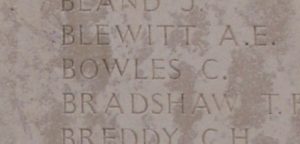
Reginald Brown, Private, 1707, Monmouthshire Regiment. Reginald was born on 17 November 1896, the son of Samuel Brown and Martha Brown (nee Davies), of 24, Hatter Street, Brynmawr. His mother died in 1899, so Reginald was adopted by Augusta Bertie at Nantyglo. By 1911 he was residing with his half-brother, Ernest Davies, at 37, Worcester Street, Brynmawr and was working as a coal miner. Reginald had been a member of the Brecknockshire Battalion, South Wales Borderers prior to the war, but when war was declared, he was posted to the 1/1st Battalion, Monmouthshire Regiment. The battalion mobilised at Stow Hill, Newport as part of the Welsh Border Brigade, Welsh Division before moving to Pembroke Dock. On 10 August 1914 the Division moved to Oswestry before moving to Northampton, then spent Christmas at Bury St. Edmunds before moving to Cambridge. In February 1915 the 1st Monmouth’s left the Welsh Division and embarked for France at Southampton on 14 February, disembarking at Le Havre the following day before entraining for Cassel and marched to billets at Dranoutre. The battalion then moved to Wulverghem and joined 84 Brigade, 5th Division before moving into the trenches for the first time. On 6 April, 84 Brigade moved to Locre to re-join the 28th Division before taking over positions at Frezenberg Ridge. On 22 April, just to the north, the Germans launched the first gas attack of the war upon French Colonial troops at Gravenstafel, heralding the opening of the Second Battle of Ypres. The fighting remained to the north of Polygon Wood until 3 May, when the Germans widened their attacks and the Polygon Wood sector was evacuated by the 28th Division, which fell back on the G.H.Q. line at Potijze. Over the coming days their new positions were shelled mercilessly, then on 8 May the Germans attacked. Despite heavy losses the Division held firm. Reginald was wounded at some time during this terrible period and was invalided back to Britain. Upon recovering, he was posted to Park Hall Camp at Oswestry. On the night of 30 March 1916, Reginald was returning to camp from Oswestry together with two friends, when the men were struck by a train as they crossed the Great Western branch line between Oswestry and Gobowen. Reginald and Allan Young were killed, whilst the third man, Thomas Pugh, was seriously injured and taken to the Oswestry Cottage Hospital. Reginald was 19 years old when he died that night. His body was taken home and he was buried in St. Tudwr’s Churchyard, Myniddislwyn on 5 April. His nephew, Reginald Ernest Davies, emigrated to Pennsylvania in the US and served during the Second World War with the 101st Airborne Division (of Band of Brother’s fame), gaining the awards of the Silver Star, Bronze Star and the Purple Heart as well as the Presidential Unit Citation.
Wilfred Calloway, Private, 26391, Grenadier Guards. Wilfred was born in 1895, the son of John Penarwood Calloway and Sarah Jane Calloway (nee Kelson), of Alma Terrace, Brynmawr. He left home to become an apprentice draper and lodged at Alma House, Newport, then in 1914 returned home, setting up his own drapery business in Somerset Street, Abertillery. Wilfred enlisted into the army in the spring of 1915, joining the Grenadier Guards. Wilfred was drafted to France in the spring of 1917, joining the 2nd Company of the 1st Battalion, Grenadier Guards. The battalion was attached to the 3rd Guards Brigade, Guards Division and was in the Somme sector in February 1917. The Guards followed up the German withdrawal to the Hindenburg Line the following month, reaching Tincourt, east of Péronne, by the middle of April. The 1st Grenadier Guards then spent several weeks resting and training at Tincourt before moving back behind the lines to Corbie and on 30 May entrained for St. Omer, and subsequently marched to Campagne. For the first fortnight in June, it remained training at Campagne, and then proceeded to Zudausques, then on 18 June the battalion moved to Herzeele, where it remained until 13 July. The 3rd Guards Brigade then moved up into the line north of Boesinghe, on the left flank of the 38th (Welsh) Division, in order to take part in the opening assault of the Third Battle of Ypres, the Battle of Pilckem Ridge, which was to be launched on 31 July. During the weeks leading up to this battle, the units of the Guards Division rotated between duty in the front line here. On 13 July the 1st Grenadier Guards began a routine tour in the line and helped beat off a German trench raid that night. Wilfred was wounded during the fighting and was evacuated to the 4th Casualty Clearing Station, where he died of his wounds on 18 July 1917. The 22-year-old is buried in Dozinghem Military Cemetery, Belgium.
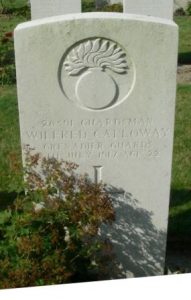
James Challenger, Private, 28375, South Wales Borderers. James was born at Resolven in 1897, the son of Isaac Challenger and Sarah Jane Challenger (nee Weeks). The family moved to the Eagle Inn, Beaufort by 1911 and James found work at the Ebbw Vale Steelworks prior to the war. He enlisted at Brynmawr into the South Wales Borderers in the summer of 1915 and in January 1917 was drafted to Salonika, joining the 7th Battalion, South Wales Borderers. The battalion had formed at Brecon in September 1914, before moving to Seaford to join 67 Brigade, 22nd Division and had been in Salonika since November 1915. James had only been at the front for six weeks when he was killed in action during a routine tour in the trenches on 17 March 1917. The 19-year-old is buried in Karasouli Military Cemetery, Greece.
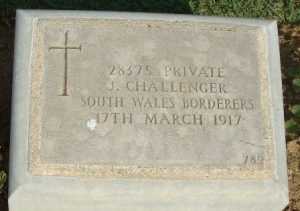
Stephen Colin, Second Engineer, Mercantile Marine. Stephen was born as Aaron Stephen Pearce in 1888, the son of Clara Maria Pearce, of 99, Worcester Street, Brynmawr. His mother married William Colin in 1891, and the couple set up home at 113, Worcester Street, Brynmawr, where Stephen assumed his stepfathers’ surname. Stephen worked as an engine fitter prior to the war, and lodged with the Gilbert family at 20, Coedcae Place, Pontypool. He went to work as an engineer at the Jarrow shipbuilding yard prior to the war, then enlisted into the Mercantile Marine and with his engineering skills was posted as Second Engineer aboard the Cardiff registered steamship SS Ampleforth. On 21 May 1917 Ampleforth was steaming some fifteen miles off Gozo en-route from Barry to Alexandria, with a mixed cargo of coal and crated aircraft, when she was torpedoed and sunk by the German submarine U65, going down with the loss of four lives. Stephen was 28 years old when he drowned that day. He has no known grave so is commemorated on the Tower Hill Memorial, London. His stepbrother, William Colin, was killed on the Somme in 1916.
William George Colin, Private, 53769, Welsh Regiment. William, known as George, was born on 21 October 1895, the son of William Colin and Clara Maria Colin (nee Pearce), of 113, Worcester Street, Brynmawr. He enlisted at Brynmawr into the Welsh Regiment under the name of George Collins during the summer of 1916 and was drafted to France a year later, joining the 9th Battalion, Welsh Regiment, which was on the Somme, attached to 58 Brigade, 19th (Western) Division. George joined the battalion as it was rebuilding following heavy losses during the opening stages of the Somme offensive in July 1916. After a brief rest the 19th Division then took part in an assault from the Heligoland Trenches against Contalmaison in daylight behind a creeping artillery barrage, the first time this strategy was used, suffering heavy casualties again, but reaching the outskirts of the village. The division was then relieved and moved back behind the lines to rebuild, in bivouacs at Baisieux Wood whilst heavy fighting continued around Ovillers and Trônes Wood. During the last few days of September and the first week in October, the British made notable advances to the north of Thiepval and towards Bapaume, capturing the villages of Le Sars and Eaucourt L’Abbaye. Winter then fell upon the Somme, yet the fighting raged on, and British attention turned towards the Ancre valley. The 19th Division, which had moved to the Bailleul area to refit, was brought back south at the beginning of October and took part in the final operations which ended with the capture of Beaumont Hamel. On 26 October the 9th Welsh relieved the 9th Loyal’s in the Stuff Redoubt trenches and endured a very trying period in the line. George was killed in action as the 9th Welsh were about to be relieved here on 5 November 1916. The 20-year-old was originally buried on the battlefield, but his grave was located by a Canadian Burial Party in April 1919, and he was re-interred in Regina Trench Cemetery, Grandcourt, France. His stepbrother, Stephen Colin, was killed at sea in 1917.
Patrick Collins, Private, L. R. Patrick cannot presently be identified. Two men of that name were killed with the Leinster Regiment, and another with the London Regiment, but none have any Welsh ties.
James Augustus Cooper, Private, 26016, Gloucestershire Regiment. James, known as Augustus, was born in 1893, the son of George Cooper and Annie Cooper (nee Thomas), of 140, King Street, Brynmawr. He worked as a coal hewer prior to enlisting at Brynmawr into the Gloucestershire Regiment in the summer of 1915. Augustus was drafted to France in the spring of 1916, joining the 8th Battalion, Gloucestershire Regiment. The battalion was in the Givenchy sector, attached to 57 Brigade, 19th (Western) Division. At the end of April 1916, the division was relieved and moved back into the 1st Army Training Area at Cresgues, before moving to Vignacourt, in the Somme rear area to begin an intensive training regime, in preparation to take part in the Somme offensive. On 27 June the division moved into support positions and watched the initial assault which began at 05.20 on 1 July 1916. On the following day the division moved forwards into the new front-line and took part in the second wave of the attack on Ovillers-La Boiselle. Augustus was killed in action during the fighting for the village on 3 July 1916. The 23-year-old has no known grave and is commemorated on the Thiepval Memorial, France.
Trevor Cross, Private, 53770, Welsh Regiment. Trevor was born on 19 September 1895, the son of Thomas Cross and Mary Cross (nee James), of 24, Well Street, Brynmawr. He worked as a butcher’s errand boy prior to the war. Trevor enlisted at Brynmawr into the army and was drafted to France in 1916, joining the 9th Battalion, Welsh Regiment, which was on the Somme, attached to 58 Brigade, 19th (Western) Division. George joined the battalion as it was rebuilding following heavy losses during the opening stages of the Somme offensive in July 1916. After a brief rest the 19th Division then took part in an assault from the Heligoland Trenches against Contalmaison in daylight behind a creeping artillery barrage, the first time this strategy was used, suffering heavy casualties again, but reaching the outskirts of the village. The division was then relieved and moved back behind the lines to rebuild, in bivouacs at Baisieux Wood whilst heavy fighting continued around Ovillers and Trônes Wood. During the last few days of September and the first week in October, the British made notable advances to the north of Thiepval and towards Bapaume, capturing the villages of Le Sars and Eaucourt L’Abbaye. Winter then fell upon the Somme, yet the fighting raged on, and British attention turned towards the Ancre valley. The 19th Division, which had moved to the Bailleul area to refit, was brought back south at the beginning of October, and took part in the final operations which ended with the capture of Beaumont Hamel. On 26 October the 9th Welsh relieved the 9th Loyal’s in the Stuff Redoubt trenches and endured a very trying period in the line. Trevor was wounded during the final stages of the Somme offensive, on the Ancre, and was evacuated to hospital in Rouen where he died of his wounds on 11 December 1916. The 20-year-old is buried in St. Sever Cemetery Extension, Rouen, France.
David James Davies, Lance Corporal, 10523, South Wales Borderers. David was born in 1887, the son of Edward Davies and Ann Davies, of Upper Gelly, Llanelly Hill. The family later moved to 60, King Street, Brynmawr. David had left home as a young man to enlist into the army and by 1911 was in South Africa with the 2nd Battalion, South Wales Borderers. The battalion was in Tientsin, China at the outbreak of war and took part in a famous operation with the Japanese against the German held port of Tsingtao on 23 September. On 4 December the battalion embarked at Hong Kong and landed at Plymouth on 12 January 1915, entraining for Rugby to join 87 Brigade, 29th Division. On 17 March 1915 the battalion sailed from Avonmouth with the Division, arriving at Alexandria on 29 March, before moving to Mudros. On 25 April 1915 the Division landed at Cape Helles, Gallipoli, as part of the original landing force which had been despatched to try and seize the Dardanelles Straits and force Turkey out of the war. The invasion forces failed to break the Turkish defences and the campaign became bogged down, so after an arduous eight months on the Peninsula the 29th Division was evacuated to Egypt on 11 January 1916, before being transferred to the Western Front, landing at Marseilles on 15 March and entraining for the Somme sector, taking up positions near Beaumont Hamel, facing Y-Ravine. The Division had an arduous time here too over the coming months, before taking part in a suicidal assault on 1 July 1916, on the opening day of the Somme offensive. The 2nd SWB alone suffered some 384 casualties on that day alone. Although severely depleted, the Division remained in the line here over the coming weeks, in trying conditions. The Division was then pulled out of the line to rest and rebuild before moving back into the line and taking part in the latter stages of the Somme offensive. The Division wintered on the Somme, taking part in the advance which followed the German withdrawal to the Hindenburg Line. At the beginning of April, the entire 29th Division moved out of the Somme sector to the Arras sector, and by 9 April took over a section of the line facing Monchy-le-Preux. The Division then began to prepare for the forthcoming Battle of Arras. At dawn on 23 April 1917, the Division launched an assault on Monchy-le-Preux. The 2nd SWB captured the front-line German trench and advanced some 300 yards beyond before consolidating its gains. David was killed in action at some time during the day. The 29-year-old has no known grave and is commemorated on the Arras Memorial, France. David is also commemorated on the Llanelly Hill war memorial.
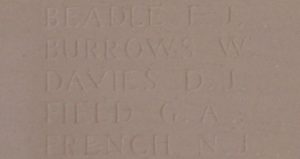
Isaac Davies, Private, 54784, Royal Welsh Fusiliers. Isaac was born at Llanwrtyd Wells in 1886, the son of James Davies and Anne Davies. By 1901 the family had moved to 28, Worcester Street, Brynmawr, where James had found work as a haulier. Isaac worked as a Grocer’s Assistant prior to the war. He enlisted into the Glamorganshire Yeomanry at Tonypandy and after completing his training was transferred to the Royal Welsh Fusiliers. Isaac was drafted to France in the autumn of 1916, joining the 15th Battalion, Royal Welsh Fusiliers, which was at Ypres, holding the Canal Bank sector at Boesinghe, attached to 113 Brigade, 38th (Welsh) Division. The Division had moved there following its epic assault on Mametz Wood in July. Upon its arrival the infantry battalions of the Division then began carrying out the normal pattern of rotation in the trenches, four days in the front, four in support and four in reserve, whilst also working on trench improvement, digging new trenches, and also carrying out regular patrols and trench raids. During the summer of 1917 the Division began training and preparing to take part in the opening offensive of the forthcoming Third Battle of Ypres, or Passchendaele, tasked with the capture of Pilckem Ridge. By 23 July the 15th RWF had completed its training behind the lines and moved back into the front-line at the Canal Bank, to begin its final tour in the line before the attack. Reports then reached battalion HQ that the Germans had withdrawn, so at dawn on 25 July 1917 the battalion sent out a raiding party to verify the intelligence. Unfortunately, the Germans were still in position and the raiding party came under heavy machine-gun fire. Isaac was killed in action that day. The 31-year-old has no known grave and is commemorated on the Ypres (Menin Gate) Memorial, Belgium.
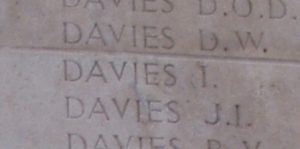
Alfred Ernest Dewsbury, Lance Corporal, 6139, South Wales Borderers. Alfred was born at Cannock in 1880, the son of Alice Dewsbury, an 18-year-old domestic servant. His mother gave birth to another son, Percy, two years later, before leaving the area and came to Crickhowell with her younger son, Percy, leaving Alfred with her mother and she gained work as a servant. Alice was imprisoned at Brecon Jail for abandoning her son on 19 January 1885 and upon her release, went back to Cannock, where she married Thomas Haughton in 1893. Percy was raised in care before emigrating to the USA in 1899, whilst Alfred enlisted into the army, serving during the Boer War of 1899-1902 with the 2nd Battalion, South Wales Borderers. He served for several years with the regiment, but by 1911 had left the army and was lodging at 16, Iron Row, Tredegar, where he worked as an underground coal haulier. Alfred married Johanna Morgan, of 17, Bailey Street, Brynmawr in 1913. As a former soldier, he was an Army Reservist, so was mobilised upon the outbreak of war, joining the 1st Battalion, South Wales Borderers. He embarked for France with the 1st Battalion, South Wales Borderers and disembarked at Le Havre on 13 August 1914. The battalion was attached to 3 Brigade, 1st Division and entrained for the Belgian frontier, near the town of Mons. The Division then took part in the Battle of Mons on 23 August, following the German invasion of the low countries, and in the epic withdrawal from Mons to the River Marne, where the German drive on Paris was halted. The Germans then withdrew north and took up defensive positions north of the river Aisne, along the Chemin des Dames Ridge and the BEF advanced before launching a frontal attack upon the German positions. The battle ended in a stalemate and both sides dug-in, beginning the line of trenches which was to become known as the Western Front. Alfred was wounded at some time, possibly during later fighting at Ypres, and returned to Britain. By the time he had recovered fitness, the 2nd Battalion, South Wales Borderers had returned following service in China, so Alfred joined the battalion at Rugby, where it had joined 87 Brigade, 29th Division. On 17 March 1915 the battalion sailed from Avonmouth with the Division, arriving at Alexandria on 29 March, before moving to Mudros. On 25 April 1915 the Division landed at Cape Helles, Gallipoli, as part of the original landing force which had been despatched to try and seize the Dardanelles Straits and force Turkey out of the war. The invasion forces failed to break the Turkish defences and the campaign became bogged down. Alfred was killed in action at Geoghegan’s Bluff on 19 June 1915, during a Turkish artillery bombardment. The 34-year-old was buried in Twelve Tree Copse Cemetery, Gallipoli.
William Downey, Private, 267446, Monmouthshire Regiment. William was born in 1884, the son of John Downey and Elizabeth Hannah Downey (nee Davies), of 82, Worcester Street, Brynmawr. He married Frances Jones at Brynmawr in 1912 and the couple set up home at 280, King Street, Brynmawr. William enlisted into the Brecknockshire Battalion, South Wales Borderers at Brecon on 19 October 1914 and was posted to the newly formed 2/1st Brecknocks. The battalion left Brecon for Dale, in Pembrokeshire in April 1915 to join the Milford Haven garrison, then at the end of 1915 moved to Bedford to join the 68th (2nd Welsh) Division. William embarked for France on 30 July 1916, and was posted to the 2nd Battalion, Monmouthshire Regiment, which was attached to the 29th Division. The Division had suffered terrible casualties at Beaumont Hamel, during its assault on Y-Ravine on 1 July 1916 and, although severely depleted, the Division remained in the line here over the coming weeks, in trying conditions. On 27 July the Division entrained for Flanders, detraining at Proven before relieving the 6th Division at Ypres. The Division held the line here over the coming weeks as it rebuilt its strength and the 2nd Monmouth’s worked hard on improving trenches and digging new communications trenches. The battalion then worked on the Menin Road, erecting elephant shelters, then on 4 October the Division was relieved and entrained south for the Somme once more, moving to Trônes Wood, before joining the latter stages of the Somme offensive. The Division wintered on the Somme, with the 2nd Monmouth’s working on road repairs around Montauban, then at Ginchy, Flers and Morval. The 2nd Monmouth’s moved into reserve at the end of December and moved to Fourdrinoy, where the men trained in infantry assault manoeuvres. On 12 January 1917 the battalion began marching back into the battle area, taking over positions near Morval, and began supplying working parties around Montauban once more. William became ill due to the terrible conditions at the time and was evacuated via the 60th Field Ambulance to the 2/2nd London Casualty Clearing Station. He was then invalided home aboard the Hospital Ship St. Patrick after being diagnosed as suffering from trench fever. After almost four months recuperating, he embarked for France again on 15 June 1917 and was reposted to the 2nd Battalion, Monmouthshire Regiment, which was by now at Ypres. The 29th Division was in support of the 38th (Welsh) Division when it launched its assault on the Pilckem Ridge on 31 July 1917. The 2nd Monmouth’s were then put to work laying a light railway track to connect the old front line to the newly captured positions over the coming days. William was killed whilst carrying out this work on 6 August 1917. The 33-year-old is buried in Bleuet Farm Cemetery, Belgium.
Frederick Edwards, Private, 25609, South Wales Borderers. Frederick was born in 1889, the son of Llewellyn Edwards and Martha Edwards (nee Hughes), of 193, King Street, Brynmawr. He worked as a coal miner hewer prior to the war. Frederick enlisted at Brynmawr into the South Wales Borderers during the spring of 1915 and was drafted to Gallipoli on 25 November 1915, joining the 2nd Battalion, South Wales Borderers, which was attached to 87 Brigade, 29th Division. The division remained here until evacuation to Egypt on 11 January 1916 and then moved to the Western Front on 15 March 1916, taking over positions near Beaumont Hamel. The Division took part in its first major action in France on the opening day of the Somme Offensive on 1 July 1916, suffering terrible casualties and refitted in the Ypres Salient before returning to the Somme to take part in the Battle of Le Transloy, suffering heavy casualties again. In the Spring of 1917, the division fought at the Battle of the Scarpe, which was part of the Arras Offensive, and then moved to Ypres, taking part in the Battle of Langemarck, and also saw further fighting during the remainder of the Passchendaele offensive, before moving to Cambrai. Here the division fought at the Battle of Cambrai in November and December 1917 before moving back to Flanders early in 1918. The German Spring Offensive hit the British on the Somme on 21 March 1918, and hit in Flanders just weeks later, on 9 April. The 29th Division was caught up in desperate fighting as it helped defend Bailleul, suffering terrible casualties once more. Frederick was captured by the Germans during this period and was taken to a POW Camp at Schlitz, in Germany. Frederick took ill whilst in captivity and died at Schlitz on 29 October 1918. The 30-year-old was originally buried at Schlitz Town Cemetery, but in December 1923 his grave was exhumed, and he was re-interred in Niederzwehren Cemetery, Kassel, Germany. His brother, Joseph, had died earlier that year after being invalided from the army.
Joseph Edwards, Private, 18004, South Wales Borderers. Joseph was born in 1882, the son of Llewellyn Edwards and Martha Edwards (nee Hughes), of 193, King Street, Brynmawr. He worked as a coal miner hewer prior to the war. Joseph enlisted at Brynmawr into the 5th Battalion, South Wales Borderers on 29 September 1914. The battalion formed at Brecon in September 1914, before moving to Park House Camp, near Tidworth to join 58 Brigade, 19th (Western) Division. In December 1914 the battalion moved to Basingstoke in billets, then on 10 January 1915 became converted to the Pioneer Battalion for the 19th Division. The Division completed its training at Bulford and Perham Down, before embarking for France and landing at Le Havre on 16 July 1915. The entire 19th Division then moved to the Nursery Sector at Calonne for trench initiation alongside the Dehra Dun Brigade. The infantry battalions of the division then began carrying out the usual routines of rotating in the trenches: four days in the front line; four in support; and four in reserve, interspersed with training regimes and carrying out working parties and trench raids. Just south, the British launched a great offensive around the town of Loos on 25 September 1915, and the 19th Division was ordered to attack from its positions at the same time, to attempt to draw enemy attention away from the main battle area. The assault was a disaster, and heavy casualties were suffered by the 19th Division for no gain. The following year the Division moved to the Somme, where it took part in the second wave of the attack on Ovillers-La Boiselle on 1 July, capturing the village at heavy cost. It then fought through the Somme Battles of Pozieres and the Ancre in 1916. Joseph was shot in the arm on 2 February 1917, whilst the division was still on the Somme, and was evacuated back to Britain for treatment. Upon recovering he was posted to Sniggery Camp, but his health began to fail, and he reported sick on 25 July, complaining of pains in his hip and right leg. Joseph was treated at the Seaforth Hospital before being transferred to Llandrindod Wells Hospital. He was then transferred to the 3rd Western General Hospital at Cardiff before being discharged from the army as medically unfit due to heart disease on 26 November 1917 and returned home to Brynmawr. His health rapidly declined, and Joseph died of heart disease at home on 12 April 1918. The 36-year-old was buried in Brynmawr Cemetery. His brother, Frederick, died as a POW in Germany later that year.
John William Gardner, Private, 7080, South Wales Borderers. John was born at Abergavenny on 14 July 1884, the son of Robert Gardner and Martha Gardner (nee Lawrence). He married Sarah Ann Wilson on 27 December 1909 and the couple set up home at 8, Glamorgan Square, Brynmawr. He worked as a coal miner hewer prior to the war and had previously served in the army, so was on the Army Reserve. As a reservist, John was mobilised as soon as war erupted and was posted to the 1st Battalion, South Wales Borderers. He embarked for France with the battalion and disembarked at Le Havre on 13 August 1914. The battalion was attached to 3 Brigade, 1st Division and entrained for the Belgian frontier, near the town of Mons. The Division then took part in the Battle of Mons on 23 August, following the German invasion of the low countries, and in the epic withdrawal from Mons to the River Marne, where the German drive on Paris was halted. The Germans then withdrew north and took up defensive positions north of the river Aisne, along the Chemin des Dames Ridge and the BEF advanced before launching a frontal attack upon the German positions. The battle ended in a stalemate and both sides dug-in, beginning the line of trenches which was to become known as the Western Front. John was killed in action near Vendresse on 26 September 1914, during a day of such severe fighting that the battalion war diary states: ‘The most ghastly day of my life, and yet one of the proudest because my regiment did its job and held on against heavy odds.’ The 30-year-old has no known grave and is commemorated on the La Ferté-Sous-Jouarre Memorial, France.
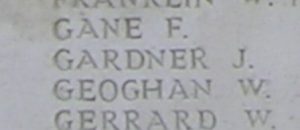
John Henry Gibbon, Driver, 161255, Royal Engineers. John was born in 1892, the son of John Gibbon and Ruth Gibbon (nee Jones), of 151, king Street, Brynmawr. He married Amy Elizabeth Powell on 31 January 1914 and the couple set up home at 4, Queen Square, Brynmawr. John worked as an assurance agent prior to enlisting at Newport into the Royal Engineers on 29 November 1915 and was posted to the Depot at Chatham for training. John then embarked at Southampton on 27 April 1917, disembarking at Alexandria on 23 May and was initially posted from the Depot at Alexandria to the 3rd Signal Squadron, Royal Engineers. On 3 October 1918 John was posted to the 4th Cavalry Division Signal Squadron, but within days he became ill and was sent to the 17th General Hospital at Alexandria. John died there of malaria on 17 October 1918. The 26-year-old is buried in Alexandria (Hadra) War Memorial Cemetery, Egypt.
David Gore, Private, T4/216043, Royal Army Service Corps. David was born in 1886, the son of William Gore and Mary Gore (nee Williams), of 7, Cross Street, Brynmawr. He married Elizabeth May Colbourne on 26 July 1905 and the couple took over the running of the Belle Vue Inn at Brynmawr. David enlisted into the Army Service Corps on 25 August 1916 and was posted to Aldershot for training. David was then posted to Bulford Camp, before embarking at Devonport on 25 September 1916 for the Middle East, disembarking at Basra on 6 November. He was then posted from the MT Base Depot to the 724th Motor Transport Company, Royal Army Service Corps. David took ill after almost twelve months service in what was then called Mesopotamia and was hospitalised at the Isolation Hospital at Baghdad, where he died of cirrhosis on 8 December 1917. The 31-year-old is buried in Amara War Cemetery, Iraq.
Thomas John Gray, Private, 2558, Monmouthshire Regiment. Thomas was born in 1886, the son of Thomas Gray and Elizabeth Gray (nee Morgan), of 13, North Street, Beaufort. He moved to Brynmawr as a young man after gaining work there as a collier, and on 4 June 1906 married Joyce Vaughan, before the couple set up home together at 5, Brook Street, Brynmawr. Thomas enlisted at Abergavenny into the 1/3rd Battalion, Monmouthshire Regiment soon after the outbreak of war. The battalion mobilised at Abergavenny attached to the Welsh Border Brigade, Welsh Division, before moving to Pembroke Dock. On 10 August 1914 the Division moved to Oswestry before moving to Northampton, then spent Christmas at Bury St. Edmunds before moving to Cambridge. In February 1915 the 3rd Monmouth’s left the Welsh Division and landed in France on 14 February, before moving to the Ypres Salient. On 3 March 1915 the battalion joined 83 Brigade, 28th Division. On 8 April the 3rd Monmouth’s relieved a French Division in the sector east of the Polygon Wood to begin its first tour in the trenches. The battalion was relieved four days later, and marched to billets in Ypres, then on 17 April relieved the 5th King’s Own in the front line, to begin a spell which would last for 17 days without relief. On 22 April, just to the north, the Germans launched the first gas attack of the war upon French Colonial troops at Gravenstafel, heralding the opening of the Second Battle of Ypres. The fighting remained to the north of Polygon Wood until 3 May, when the Germans widened their attacks and the Polygon Wood sector was evacuated by the 28th Division, which fell back on the G.H.Q. line at Potijze. Over the coming days their new positions were shelled mercilessly, then on 8 May the Germans attacked. Despite heavy losses the Division held firm and later that day three Companies of the 3rd Monmouth’s moved back into billets at Vlamertinghe, leaving B Company in the line. By now casualties had become so severe that on 10 May a Composite Battalion was formed from remnants of 83 Brigade, under Lt Col Gough, and proceeded to the G.H.Q. line at Potijze. Over the coming days their new positions were shelled mercilessly, then on 8 May the Germans attacked. Despite heavy losses the Division held firm and later that day three Companies of the 3rd Monmouth’s moved back into billets at Vlamertinghe, leaving B Company in the line. By now casualties had become so severe that on 10 May a Composite Battalion was formed from remnants of 83 Brigade, under Lt Col Gough, and proceeded to the G.H.Q. line at Potijze. During the coming weeks, all three battalions of the Monmouth’s, which were all at Ypres, suffered such heavy losses that on 27 May they were merged together at Vlamertinghe in 84 Brigade, 28th Division. On 11 August 1915 the individual battalions resumed identity and the 3rd Monmouth’s re-joined 83 Brigade, before becoming the Pioneer Battalion to the 49th (West Riding) Division in September 1915. On 5 September the 3rd Monmouth’s moved to the Elverdinghe Chateau grounds and began work on trench improvements, road repairs and dugouts. Thomas was killed here whilst on a working party improving drainage in the area on 9 November 1915. The 29-year-old is buried in Bard Cottage Cemetery, Belgium.
Thomas Charles Griffiths, Private, 14927, South Wales Borderers. Thomas was born in 1873, the son of Thomas Griffiths and Elizabeth Griffiths (nee Rees), of 15, Worcester Buildings, Brynmawr. He married Martha Maggs in 1898 and the couple set up home at 81, Bailey Street, before moving to 50, Harwick Road, Brynmawr. Thomas worked as a coal miner prior to enlisting at Brynmawr into the South Wales Borderers soon after the outbreak of war. He was drafted to France on 2 May 1915 and was posted to the 1st Battalion, South Wales Borderers, which was in positions north-east of Bethune, near Richebourg attached to 3 Brigade, 1st Division. The 1st Division took part in its first major action of 1915 here on 9 May 1915, during the Battle of Aubers Ridge, when it attacked alongside the Meerut Division. The attack of the 2nd Welsh was held up by a flooded ditch, which the men forded, before being hit by heavy machine-gun fire, and a large number of casualties were suffered before the survivors withdrew. After the battle of Aubers, 3 Brigade took over a section of old French trenches, where it received drafts of reinforcements. On 20 May, the division was moved to the Cuinchy area, where it endured a great deal of bombing and rifle grenading, then at the latter end of June the Battalion moved to the Vermelles area, in preparation for the battle of Loos. The Battle of Loos was launched on 25 September 1915, following the release of large quantities of poison gas by the British. 3 Brigade moved off with the 2nd Munster’s on the right, the 2nd Welsh in echelon, to their left, and the 1st SWB in support. The gas had blown back over the British lines, so conditions during the advance were horrendous, then whilst advancing past the Vermelles-Hulluch Road the Brigade came under heavy machine-gun fire. Thomas was killed during heavy fighting on the following day, 26 September 1915. The 42-year-old has no known grave and is commemorated on the Loos Memorial, France.
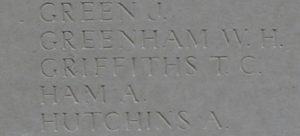
Frederick Grist, Private, 1518, Monmouthshire Regiment. Frederick was born in 1893, the son of Albert Edward Grist and Hannah Elizabeth Grist (nee Hoffman), of 5, Davies Street, Brynmawr. He worked as a coal miner prior to enlisting at Abergavenny into the 1/3rd Battalion, Monmouthshire Regiment soon after the outbreak of war. The battalion mobilised at Abergavenny attached to the Welsh Border Brigade, Welsh Division, before moving to Pembroke Dock. On 10 August 1914 the Division moved to Oswestry before moving to Northampton, then spent Christmas at Bury St. Edmunds before moving to Cambridge. In February 1915 the 3rd Monmouth’s left the Welsh Division and landed in France on 14 February, before moving to the Ypres Salient. On 3 March 1915 the battalion joined 83 Brigade, 28th Division. On 8 April the 3rd Monmouth’s relieved a French Division in the sector east of the Polygon Wood to begin its first tour in the trenches. The battalion was relieved four days later, and marched to billets in Ypres, then on 17 April relieved the 5th King’s Own in the front line, to begin a spell which would last for 17 days without relief. On 22 April, just to the north, the Germans launched the first gas attack of the war upon French Colonial troops at Gravenstafel, heralding the opening of the Second Battle of Ypres. The fighting remained to the north of Polygon Wood until 3 May, when the Germans widened their attacks and the Polygon Wood sector was evacuated by the 28th Division, which fell back on the G.H.Q. line at Potijze. Over the coming days their new positions were shelled mercilessly, then on 8 May the Germans attacked. Despite heavy losses the Division held firm and later that day three Companies of the 3rd Monmouth’s moved back into billets at Vlamertinghe, leaving B Company in the line. By now casualties had become so severe that on 10 May a Composite Battalion was formed from remnants of 83 Brigade, under Lt Col Gough, and proceeded to the G.H.Q. line at Potijze. Over the coming days their new positions were shelled mercilessly, then on 8 May the Germans attacked. Despite heavy losses the Division held firm and later that day three Companies of the 3rd Monmouth’s moved back into billets at Vlamertinghe, leaving B Company in the line. By now casualties had become so severe that on 10 May a Composite Battalion was formed from remnants of 83 Brigade, under Lt Col Gough, and proceeded to the G.H.Q. line at Potijze. During the coming weeks, all three battalions of the Monmouth’s, which were all at Ypres, suffered such heavy losses that on 27 May they were amalgamated together at Vlamertinghe in 84 Brigade, 28th Division. Frederick was killed in action on 26 June 1915, just after the amalgamated battalion moved into the line at Ridge Wood to begin a routine tour. The 22-year-old has no known grave and is commemorated on the Ypres (Menin Gate) Memorial, Belgium.
Moses Harding, Private, 30618, Welsh Regiment. Moses was born in 1885, the son of William Harding and Mary Harding (nee Arthurs), of Clydach Bridge, Brynmawr. He married Elizabeth Rhydderch on 3 February 1908 and the couple set up home at 6, Cemetery Road, Brynmawr. Moses worked as a coal miner hewer prior to enlisting at Brynmawr into the South Wales Borderers on 30 September 1914. He was discharged as medically unfit on 5 November 1914, but undeterred, re-enlisted into the Welsh Regiment and was drafted to France on 6 July 1915, joining the 1st Battalion, Welsh Regiment, which was at Dranoutre, attached to 84 Brigade, 28th Division. The Battalion had been seconded to the 5th Division, but within days of Richard’s arrival, moved to Ypres to re-join the 28th Division. The Division was holding a section of front line running from Wytschaete to the Ypres to Zandvoorde road. On 17 April the 1st Welsh marched up to relieve the 5th Fusiliers at Broodseinde, just beyond Zonnebeke, on the extreme point of the Ypres Salient. On 22 April the Germans launched a poison gas attack at Gravenstafel, the first such attack of the war, and broke the line which was being held by a French Colonial Division. The Canadians rushed in to plug the gap, but this heralded the opening phase of the Second Battle of Ypres and soon afterwards the 1st Welsh became dragged into the terrible fighting, suffering heavy casualties over the coming days. Following serious casualties at Ypres, a Composite Brigade was formed, composing of the 2nd Buffs, 2nd Cheshire’s, 1st Welsh, and the 1st York and Lancaster’s. It was dissolved on 19 May 1915, and the formation assumed its normal configuration, before moving south to join the Battle of Loos, which had opened on 25 September 1915. The 1st Welsh entered the fray on 29 September, taking up support positions at Vermelles, near where the 2nd Welsh had been almost wiped out days earlier. Two days later the 1st Welsh moved into the front-line and prepared to launch an assault on Little Willie trench. The battalion attacked at dawn on 1 October and became caught up in desperate fighting over the coming days. Moses was killed in action here on 2 October 1915. The 30-year-old has no known grave and is commemorated on the Loos Memorial, France.
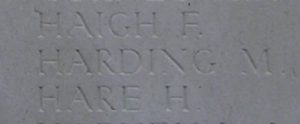
Walter James Harris, Corporal, 266162, Monmouthshire Regiment. Walter was born in 1894, the son of Thomas Harris and Paulina Harris (nee Lucas), of 20, King Edward Road, Brynmawr. He worked as a shop assistant prior to enlisting at Pontypool into the 2nd Battalion, Monmouthshire Regiment on 3 December 1915. Walter was posted to the 3/2nd Monmouth’s, a reserve battalion, which was stationed near Oswestry, at Gobowen. Walter served with the reserve battalion for over two years, but ill health and two spells in hospital prevented him from being drafted overseas to fight. It was this ill health that led to him being discharged from the army as medically unfit on 5 February 1918 and he returned home to Brynmawr after having been found to have a tumour. Walter died of cancer at home on 20 July 1918, aged 23. He is not commemorated as a war casualty by the CWGC.
Alfred James Herbert, Staff Sergeant, 25540, Royal Army Medical Corps. Alfred was born in 1876, the son of Edwin Herbert and Mary Ann Herbert (nee Millard), of 169, King Street, Brynmawr. He married Sarah Jane Latcham in Bristol in 1900, and after several moves over the coming years, settled with her and their two sons at 13, Factory Road, Brynmawr. Alfred enlisted into the Royal Army Medical Corps on 2 September 1914 and was drafted to France on 19 December 1915. He served throughout the entire war, but after the Armistice his health began to deteriorate and Alfred was discharged from the army as medically unfit on 6 June 1919, returning home to Brynmawr. He was granted a pension, due to suffering from chronic inflammation of the stomach, as a result of active service. Alfred died of stomach cancer at Brynmawr on 31 March 1921, aged 45. He is not commemorated as a war casualty by the CWGC.
Philip George Herbert Howells, Second Lieutenant, North Staffordshire Regiment. Philip was born at Burton-on-Trent in 1897, the son of Phillip Henry Howells and Blanche Howells (nee Weeks). His mother was from Brynmawr, and by 1911 the family had moved back to her native home, to 16, Alma Street, Brynmawr. Philip was educated at Aberystwyth University where he became a member of the OTC, and before graduating enlisted into the army and was commissioned as Second Lieutenant into the 10th Battalion, North Staffordshire Regiment on 27 September 1915, joining the battalion at Darlington. In November 1915 the battalion moved to Rugeley, Cannock Chase to join the 1st Reserve Brigade. Philip was drafted to France on 3 September 1916, joining the 8th Battalion, North Staffordshire Regiment, which was in positions near Dranoutre, refitting following heavy losses on the Somme, and was attached to 57 Brigade, 19th (Western) Division. At the beginning of October, the division, now fully rebuilt, moved back to the Somme sector, to take part in the latter phases of the Somme offensive, and by 20 October had reached Albert. The 8th North Staffs moved into the Stuff Redoubt trenches on 24 October and were not relieved until 1 November. The battalion had a relatively quiet next few weeks, before entering the line at Regina Trench on 18 November 1916 and launched an assault upon Desire Trench. Conditions were terrible, with fresh snow covering the ground, and the battalion suffered severe casualties before the survivors withdrew back to their own lines. Philip was posted as missing during the fighting that day and was later deemed to have been killed in action. The 20-year-old is buried in Grandcourt Road Cemetery, Grandcourt, France.
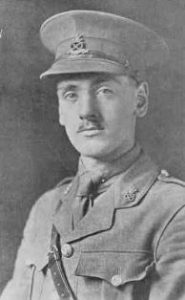
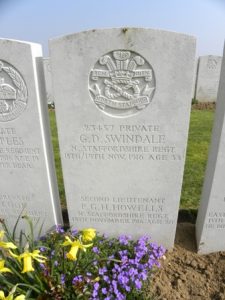
Ewart Huggins, Private, 36238, Welsh Regiment. Ewart was born in 1888, the son of Jacob Huggins and Isabella Ann Huggins (nee Carey), of 5, Dumfries Place, Brynmawr. He worked as a collier prior to the war. Ewart had enlisted into the Brecknockshire Battalion, South Wales Borderers at Brynmawr on 4 May 1908, soon after the formation of the Territorial Force and had attended the annual TA summer camp every year without fail, at Brecon; Porthcawl; Aberystwyth; and at Hereford, before being discharged in May 1913. Following the outbreak of war, he enlisted into the Welsh Regiment. Ewart was drafted to France on 5 May 1915, joining the 1st Battalion, Welsh Regiment, which was in Flanders, attached to 84 Brigade, 28th Division. The division was in the process of rebuilding following heavy losses during the Second Battle of Ypres which had seen such terrible casualties that a Composite Brigade was formed, composing of the 2nd Buffs, 2nd Cheshire’s, 1st Welsh, and the 1st York and Lancaster’s. It was dissolved on 19 May 1915, and the formation assumed its normal configuration, before moving south to join the Battle of Loos, which had opened on 25 September 1915. The 1st Welsh entered the fray on 29 September, taking up support positions at Vermelles, near where the 2nd Welsh had been almost wiped-out days earlier. Two days later the 1st Welsh moved into the front-line and prepared to launch an assault on Little Willie trench. The battalion attacked at dawn on 1 October and became caught up in desperate fighting over the coming days. Ewart was seriously wounded during the initial advance and was evacuated to the 33rd Casualty Clearing Station at Bethune, where he died of his wounds on the following day, 2 October 1915. The 27-year-old is buried in Bethune Town Cemetery, France.
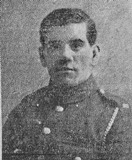
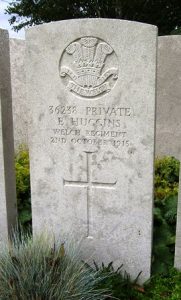
Hugh Arthur Hughes, Private, B/20193, Royal Fusiliers. Hugh was born in 1888, the son of John Henry Hughes and Elizabeth Hughes (nee Evans), of Tyddyngyrfa, Anglesey. He came to South Wales to work as a Bank Clerk for the London City and Midland Bank at Brynmawr prior to the war and lodged at 4, Beaufort Buildings, Brynmawr. Hugh enlisted at Wrexham into the 26th (Bankers) Battalion, Royal Fusiliers soon after the outbreak of war. The battalion was raised by the Lord Mayor and City of London in July 1915 from Bank Clerks and Accountants, then moved to Marlow before moving to Aldershot to join 124 Brigade, 41st Division. Hugh married Charlotte Hannah Williams, a schoolteacher from Brynmawr, at Aldershot whilst on leave on 2 February 1916. He embarked for France with the battalion on 4 April 1916 and the entire division moved to Flanders, to begin familiarisation with trench warfare in the areas of Ploegsteert and the Douve valley, south of Ypres. The division remained here until August 1916, when it moved to the Somme, and took part in the Battle of Flers-Courcelette from 15 September, the first time that tanks were ever used in action. The Division remained in the line throughout the duration of the battle, pushing on to Courcelette before coming out for a rest and re-fit. The division began moving back into the line by 2 October, to take part in the Battle of Le Transloy, taking over positions in Gird Support and Gird Trench, near Flers. Hugh was killed in action when the battalions positions were hit by German artillery fire on 4 October 1916. The 28-year-old is buried in A.I.F. Burial Ground, Flers, France.
William James, Private, 29112, South Wales Borderers. William was born in 1896, the son of William James and Sarah Jane James (nee Lewis), of 190, King Street, Brynmawr. He worked in his parents Grocers Shop prior to enlisting at Brynmawr into the South Wales Borderers. William was drafted to France in the early summer of 1917 and was posted to the 2nd South Wales Borderers, which was attached to 87 Brigade, 29th Division. The battalion had suffered heavy casualties during the Battle of Arras prior to William’s arrival and refitted before moving to the Ypres Salient. It was in support of the 38th (Welsh) Divisions assault on the Pilckem Ridge on the opening day of the Third Battle of Ypres, then on the night of 14-15 August the 2nd SWB moved into the line facing Langemarck, ready to launch another offensive. On the following day the battalion reconnoitred the ground in front of them, and laid white tapes in No Man’s Land, to guide the attacking troops, and at dawn on 16 August 1917 the 2nd SWB launched an attack on Langemarck. The battalion successfully took its two objectives but had suffered 163 casualties. The Division then had another period out of the line to rest and refit before taking part in further fighting near Poelcapelle. Early in November 1917 the Division was relieved from the line at Ypres, and moved south to the Bellacourt area, to prepare to take part in the forthcoming Battle of Cambrai. The Division entrained for Péronne on 17 November, marching to a camp four miles out of the town at Haut Allaines, then by midnight on 18 November had reached Fins. On the following day the Division received its battle stores and detailed orders for the forthcoming battle, marching off via Gouzeaucourt to its assembly positions at Marcoing. The assault began at dawn on 20 November, but the Division suffered terrible casualties whilst attacking Masnières, on the Hindenburg Line. The Germans launched a counterattack on 30 November and drove in the British lines, retaking most of the gains that the British had fought so hard for. The 2nd SWB, by now in trenches at Marcoing, moved forward into defensive positions around a bridgehead on the canal and received news that the Germans had broken to on their right flank. The battalion was then hit hard and over the coming days took part in a desperate defensive action, before being relieved on 3 December 1917. William was reported as missing just after the relief that day and was later deemed to have been killed in action. The 21-year-old has no known grave and is commemorated on the Cambrai Memorial, Louverval, France.
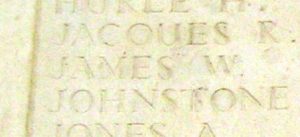
Jack Ronald Jenkins, Private, 2632, Monmouthshire Regiment. Jack was born in 1895, the son of Meyrick Jenkins and Mary Elizabeth Jenkins (nee Smith), of Garland Terrace, Llanfrechfa. His mother was from Brynmawr, and Jack was a regular visitor to family there even before his parents moved to Swindon, where his father worked for the Great Western Railway. Jack remained in Brynmawr but left the town to enlist at Abergavenny into the 3rd Battalion, Monmouthshire Regiment soon after the outbreak of war. The battalion mobilised at Abergavenny attached to the Welsh Border Brigade, Welsh Division, before moving to Pembroke Dock. On 10 August 1914 the Division moved to Oswestry before moving to Northampton, then spent Christmas at Bury St. Edmunds before moving to Cambridge. In February 1915 the 3rd Monmouth’s left the Welsh Division and landed in France on 14 February, before moving to the Ypres Salient. On 3 March 1915 the battalion joined 83 Brigade, 28th Division. On 8 April the 3rd Monmouth’s relieved a French Division in the sector east of the Polygon Wood to begin its first tour in the trenches. The battalion was relieved four days later, and marched to billets in Ypres, then on 17 April relieved the 5th King’s Own in the front line, to begin a spell which would last for 17 days without relief. On 22 April, just to the north, the Germans launched the first gas attack of the war upon French Colonial troops at Gravenstafel, heralding the opening of the Second Battle of Ypres. The fighting remained to the north of Polygon Wood until 3 May, when the Germans widened their attacks and the Polygon Wood sector was evacuated by the 28th Division, which fell back on the G.H.Q. line at Potijze. Over the coming days their new positions were shelled mercilessly, and heavy casualties were suffered. Jack was killed in action here on 8 May 1915. The 19-year-old has no known grave and is commemorated on the Ypres (Menin Gate) Memorial, Belgium. There is also an individual memorial to Jack inside St. Mary’s Church, in the form of a silvered urn, which is located on a table by the war memorial.
Lewis Jones, Private, 267477, Monmouthshire Regiment. Lewis was born in about 1884. His parents died when he was young and Lewis lived with his sister, Mary Ann Jones, at 48, Somerset Street, Brynmawr. He enlisted at Brynmawr into the Brecknockshire Battalion, South Wales Borderers on 12 October 1914 and was posted to the 2/1st Brecknockshire Battalion, which had formed at Brecon the previous month. The battalion left Brecon for Dale, in Pembrokeshire in April 1915 to join the Milford Haven garrison, then at the end of 1915 moved to Bedford to join the 68th (2nd Welsh) Division. Lewis embarked for France on 30 July 1916 and was posted from the Infantry Base Depot to the 1/2nd Battalion, Monmouthshire Regiment, which was the Divisional Pioneer Battalion to the 29th Division. The Division had suffered terrible casualties at Beaumont Hamel, during its assault on Y-Ravine on 1 July 1916 and, although severely depleted, the Division remained in the line here over the coming weeks, in trying conditions. On 27 July the Division entrained for Flanders, detraining at Proven before relieving the 6th Division at Ypres. The Division held the line here over the coming weeks as it rebuilt its strength and the 2nd Monmouth’s worked hard on improving trenches and digging new communications trenches. The battalion then worked on the Menin Road, erecting elephant shelters, then on 4 October the Division was relieved and entrained south for the Somme once more, moving to Trônes Wood, before joining the latter stages of the Somme offensive. The Division wintered on the Somme, with the 2nd Monmouth’s working on road repairs around Montauban, then at Ginchy, Flers and Morval. The 2nd Monmouth’s moved into reserve at the end of December and moved to Fourdrinoy, where the men trained in infantry assault manoeuvres. On 12 January 1917 the battalion began marching back into the battle area, taking over positions near Morval, and began supplying working parties around Montauban once more. The Division wintered on the Somme, taking part in the advance which followed the German withdrawal to the Hindenburg Line. At the beginning of April, the entire 29th Division moved out of the Somme sector to the Arras sector, and by 9 April took over a section of the line facing Monchy-le-Preux. The Division then began to prepare for the forthcoming Battle of Arras. At dawn on 23 April 1917, the Division launched an assault on Monchy-le-Preux. The division captured the front-line German trench and advanced some 300 yards beyond before consolidating its gains. After several more weeks fighting at Arras, the division moved further north to Ypres, initially to hold the line whilst other units had been withdrawn for specialist training, in readiness for the Third Battle of Ypres, which was to open on 31 July 1917. The 2nd Monmouth’s then began work improving the Canal Bank defences and Bard Causeway. Lewis was wounded when the Germans opened up an artillery barrage upon the Canal Bank on 10 July and was evacuated to the 88th Field Ambulance, where he died of his wounds on 11 July 1917. The 33-year-old was buried in Canada Farm Cemetery, Belgium.
Sydney Jones, Private, 58651, South Wales Borderers. Sydney was born on 30 January 1898, the son of John Jones and Rose Jones, of 14, Boundary Street, Brynmawr. His father died when he was a young boy and his mother remarried to Charles Davies. Sydney worked as a coal miner prior to enlisting at Brecon into the army and was drafted to France in the spring of 1918, joining the 10th Battalion, South Wales Borderers, which was attached to 115 Brigade, 38th (Welsh) Division. The Division had wintered in the Sailly-sur-la-Lys sector and remained in the area over the winter before being moved to positions north of Albert, at Bouzincourt Ridge, at the end of March 1918, relieving the battered 2nd and 47th Divisions. It held this sector, again carrying out minor operations and trench raids, over the coming months, before taking part in the great offensive of 21 August 1918, and began its advance towards the Hindenburg Line. Over the coming days the division recaptured the old Somme battlefields of 1916 whilst heading towards the Hindenburg Line. Henry joined the 15th Welsh near Gouzeaucourt, just after its part in the capture of the heavily defended town, following a successful assault on Gauche Wood. The battalion then had a short spell in reserve north of Equancourt before moving to positions at Lechelles, a small village slightly north of Equancourt, and west of Havrincourt Wood. The Allies were by now in striking range of the Hindenburg Line and the 38th Division was put into reserve whilst the Australians and Americans assaulted the Hindenburg Line in their sector, near Bony. Following the breaching of the line on 29 September the 38th Division advanced through their tired Allies and continued the offensive, tasked with the clearing of Mortho Wood and the capture of Villers-Outréaux, both of which fell on 8 October after terrible fighting. The division maintained its advance over the coming days, advancing past Le Cateau and on 17 October launched an assault across the river Selle, before advancing to the village of Forest. Sydney was wounded when Forest was bombarded with gas shells on 28 October and died on the following day, 29 October 1918. The 20-year-old is buried in Forest Communal Cemetery, France.
James Joynson, Private, 37007, South Wales Borderers. James was born in 1894, the son of William Joynson and Elizabeth Joynson (nee Jones), of 10, Sunny Bank, Brynmawr. He worked as an assistant for a fish dealer prior to enlisting at Brynmawr into the South Wales Borderers in 1916. James was drafted to France late in 1916, joining the 11th Battalion, South Wales Borderers, which was attached to 115 Brigade, 38th (Welsh) Division. James probably joined the battalion after the division had been relieved following its assault on Mametz Wood in July. It then took over a section of the front at Hébuterne before moving to the Ypres Salient and taking over the Canal Bank sector at Boesinghe. The infantry battalions of the Division then began carrying out the normal pattern of rotation in the trenches, four days in the front, four in support and four in reserve, whilst also working on trench improvement, digging new trenches, and carrying out regular patrols and trench raids. On 31 July 1917 the Division launched its famous assault on the Pilckem Ridge, capturing Iron Cross and reaching its objective of the Steenbeek. James was killed in action during the assault that day. The 22-year-old has no known grave and is commemorated on the Ypres (Menin Gate) Memorial, Belgium. There is also an individual memorial plaque inside the Church to James marking the east window of the Church, which was presented by his parents in his memory.
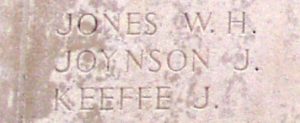
William Alfred Kelson, Gunner, 931264, Royal Field Artillery. William was born in 1892, the son of Henry Kelson and Annie Kelson (nee Price), of 29, Intermediate Road, Brynmawr. His mother died in 1900 and his father remarried to Martha Thomas in 1905, his third wife. William worked as a colliery overman prior to moving to Swansea to become an outfitter’s assistant and lodged at 1, The Promenade, Mumbles. He enlisted at Swansea into the 3/1st (Welsh) Howitzer Battery, Royal Field Artillery on 6 September 1915, being posted to their Depot for training. William was not drafted to France until 18 February 1918, when he was posted to the 317th Brigade, Royal Field Artillery. He had been in France less than a month when he suffered a badly lacerated finger when his hand got jammed in the breech of an 18-pounder field gun, and was evacuated to the 149th Field Ambulance, before being sent to the 3rd General Hospital at Le Treport. He returned to England aboard the Hospital Ship Antrim and after further medical treatment was posted to the Depot at Ripon, before embarking again for France on 2 September 1918, joining D Battery, 83rd Brigade, Royal Field Artillery. The battery was attached to the 18th (Eastern) Division and was in the process of crossing the old Somme battlefields of 1916, having taken part in the great Allied offensive which had launched on 21 August. William joined his new battery at Montauban, where it was resting prior to re-joining the offensive along the Somme canal. By the end of the month the division had reached the outer Hindenburg Line positions around Vendhuile and once the line had been smashed on 29 September, joined the great advance, reaching Le Catelet within days. The division saw heavy fighting around Villers Outréaux before continuing its advance and had reached Le Cateau by 17 October. William’s battery was in action, supporting another assault by the division, on 23 October 1918 when he was killed by German counter-battery fire. The 26-year-old is buried in Le Cateau Military Cemetery, France.
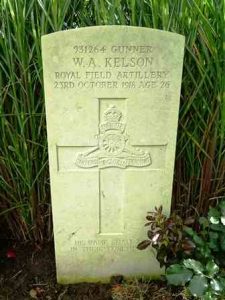
Arthur Lewis, Private, 1281, Monmouthshire Regiment. Arthur was born in 1887, the son of George Lewis and Selina Lewis (nee Clements), of 96, Worcester Street, Brynmawr. The family had moved to 283, King Street, Brynmawr by 1911 and Arthur was working as a coal hewer. He enlisted at Brynmawr into the 1.3rd Battalion, Monmouthshire Regiment soon after the outbreak of war. The battalion mobilised at Abergavenny attached to the Welsh Border Brigade, Welsh Division, before moving to Pembroke Dock. On 10 August 1914 the Division moved to Oswestry before moving to Northampton, then spent Christmas at Bury St. Edmunds before moving to Cambridge. In February 1915 the 3rd Monmouth’s left the Welsh Division and landed in France on 14 February, before moving to the Ypres Salient. On 3 March 1915 the battalion joined 83 Brigade, 28th Division. On 8 April the 3rd Monmouth’s relieved a French Division in the sector east of the Polygon Wood to begin its first tour in the trenches. The battalion was relieved four days later, and marched to billets in Ypres, then on 17 April relieved the 5th King’s Own in the front line, to begin a spell which would last for 17 days without relief. On 22 April, just to the north, the Germans launched the first gas attack of the war upon French Colonial troops at Gravenstafel, heralding the opening of the Second Battle of Ypres. Arthur was killed in action on 2 May 1915, on the day prior to the Germans attacking Polygon Wood. The 27-year-old has no known grave and is commemorated on the Ypres (Menin Gate) Memorial, Belgium.
Idris James Lewis, Sapper, 574582, Royal Engineers. Idris was born in 1891, the son of Thomas Roderick Lewis and Ann Lewis (nee Davies), of 55, Worcester Street, Brynmawr. He worked as a fitter prior to enlisting at Brynmawr into the Brecknockshire Battalion, South Wales Borderers soon after the outbreak of war. Idris was probably posted to the 2/1st Brecknockshire Battalion, which had formed at Brecon in September 1914. The battalion left Brecon for Dale, in Pembrokeshire in April 1915 to join the Milford Haven garrison, then at the end of 1915 moved to Bedford to join the 68th (2nd Welsh) Division. In November 1916 the battalion was absorbed by the 2/7th Battalion, Royal Welsh Fusiliers at Wrentham, near South Wold, and moved to Benacre Camp, Wrentham. Idris appears to have been deemed as unfit for infantry duty and was duly transferred to the Royal Engineers before being drafted to France. Idris survived the war and returned back to Chatham Depot, before coming home on demobilisation leave. Sadly, he took ill and died at 5, Cemetery Road, Brynmawr on 12 March 1919, aged 28. Nothing further is currently known of him, as he is not commemorated as a war casualty by the CWGC.
Thomas Mahoney, Private, 15268, South Wales Borderers. Thomas was born in 1880, the son of John Mahoney and Ellen Mahoney (nee Leary), of 5, Boundary Street, Brynmawr. He had left home to enlist into the army as a young man, but at some time prior to the war had returned to civilian life and was on the Army Reserve. Thomas was mobilised upon the outbreak of war and was drafted to France on 26 January 1915, before being posted to the 1st Battalion, South Wales Borderers, which was attached to 3 Brigade, 1st Division and was holding the line north-east of Bethune, near Richebourg. The 1st Division took part in its first major action of 1915 here on 9 May 1915, during the Battle of Aubers Ridge, when it attacked alongside the Meerut Division. The attack of 3 Brigade was held up by a flooded ditch, which the men forded, before being hit by heavy machine-gun fire, and a large number of casualties were suffered before the survivors withdrew. After the battle of Aubers, the brigade took over a section of old French trenches, where it received drafts of reinforcements. On 20 May, the division was moved to the Cuinchy area, where it endured a great deal of bombing and rifle grenading, then at the latter end of June moved to the Vermelles area, in preparation for the battle of Loos. The Battle of Loos was launched on 25 September 1915, following the release of large quantities of poison gas by the British. 3 Brigade moved off with the 2nd Munster’s on the right, the 2nd Welsh in echelon, to their left, and the 1st SWB in support. The gas had blown back over the British lines, so conditions during the advance were horrendous, then whilst advancing past the Vermelles-Hulluch Road the Brigade came under heavy machine-gun fire. Thomas was killed in action near Hulluch on the following day, 26 September 1915. The 34-year-old has no known grave and is commemorated on the Loos Memorial, France.
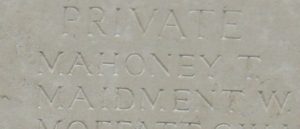
Herbert Percival Manuel, Able Seaman, R/6009, Royal Naval Volunteer Reserve. Herbert was born at Evershot, Dorset on 23 October 1893, the son of Frederick Manuel and Grace Susan Manuel (nee Lock). The family then moved to West Knowle Farm, Long Sutton, Langport, Somerset. Herbert was living at Brynmawr with his brother Ernest when war broke out. He enlisted into the army on 11 December 1915, but was transferred to the Royal Naval Volunteer Reserve, before being drafted to France on 31 December 1917, joining Howe Battalion, 63rd (Royal Naval) Division. The division had just taken part in very costly fighting at Cambrai, during the Action of Welch Ridge on 30 December, following the German counterattack, when Herbert arrived. Once the fighting eased, the division remained in the Villers-Plouich sector for the remainder of the winter and was hit hard following the launching of the German Spring Offensive on 21 March 1918, seeing heavy fighting as it was forced to retire from its positions near Havrincourt and four days later fought a defensive action near Thiepval which helped stem the German offensive. On 29 April 1918 Herbert was transferred to Anson Battalion, in the same division, but was hospitalised the same day after contracting influenza. He re-joined the battalion on 22 June 1918, by which time the Royal Naval Division was holding the line at Hérissart. On 21 August 1918 the Allies launched a great offensive along the Somme front, following the Australian and Canadian victory at Villers-Bretonneux weeks earlier, and the Royal Naval Division launched its assault from Ablainzeville towards Achiet-le-Grand. Within three days the division had crossed the Albert to Bapaume Road, reaching Thilloy soon afterwards. The division continued its advance over the coming weeks, crossing the Hindenburg line at the Escaut Canal following its fall on 29 September, and by 1 October had reached positions in front of Proville, near Cambrai. On 8 October 1918 Anson Battalion attacked from the direction of Anneuz and captured the village of Niergnies. Herbert was killed in action during the fighting that day. The 24-year-old is buried in Rumilly-en-Cambresis Communal Cemetery, France.
Charles Ellis Martin, Gunner, 57582, Royal Garrison Artillery. Charles was born in 1893, the son of Job Martin and Sarah Martin (nee Jones), of 30, Oakland Cottage, Llanddewi’r cwm, Brecon. He had served with the Brecknockshire Battalion, South Wales Borderers (Territorials) from 1908 until 1912 and had served as a Policeman at Brynmawr prior to the war. He enlisted there into the Royal Garrison Artillery alongside his friend and colleague PC Thomas Henry Pitman. Charles was posted to France early in 1916, joining ‘Y’ 34th Trench Mortar Battery, Royal Garrison Artillery. He served during the Somme offensive that summer, and towards the end of 1916 returned home to Brynmawr on two weeks leave. Charles had only been back in France a week when he was mortally wounded and died on 16 January 1917 aged 23. He is buried in Hazebrouck Communal Cemetery, France.
Charles Mason, Private, 236598, Herefordshire Regiment. Charles was born in 1892, the son of George Mason and Mary Ann Mason (nee Pritchard), of Little Tarrington, near Hereford. He came to work at Brynmawr as a young man but following the outbreak of war returned home to enlist at Hereford into the Herefordshire Regiment. Charles was drafted to Egypt in the summer of 1917, before moving into Palestine to join the 1/1st Battalion, Herefordshire Regiment, which was attached to the 53rd (Welsh) Division. The division had taken part in the disastrous First and Second Battles of Gaza earlier that year, then the EEF suffered a change in leadership, with Sir Edmund Allenby assuming command, before being re-organised, and a third offensive was launched against a wider front from Beersheba to Gaza on 31 October 1917. This time the Turkish defences were breached, and the road to Jerusalem now lay open and the EEF began to advance north. On 6 November 1917, 158 Brigade launched an attack on the Khuweilfeh Heights, and once secured, the EEF continued its advance into the Judean Hills, the 53rd Division capturing Hebron and Bethlehem, before securing the Jerusalem to Jericho Road. Allenby finally made his triumphant entry into Jerusalem on 11 December. The division continued its long advance north over the coming months, but by now the Turkish forces were in full retreat. Charles was killed in action on 3 May 1918. The 25-year-old is buried in Jerusalem War Cemetery, Israel.
Ernest Alfred Moore, Gunner, W/2471, Royal Field Artillery. Ernest was born in 1890, the son of Edward Moore and Sarah Olivia Moore (nee Holley), of Gelly Velyn Crossing Cottage, Brynmawr. He worked as a coal hewer prior to enlisting at Cardiff into the Welsh Divisional Royal Field Artillery soon after the outbreak of war and was posted to North Wales for training. The newly raised Welsh Division had no artillery guns to start with, so the men trained with telegraph poles strapped onto farm carts, until their guns finally arrived. Once properly organised, Ernest joined C Battery, 122nd Brigade, Royal Field Artillery and the division was numbered to the 38th (Welsh) Division, before moving to Winchester in the summer of 1915 to complete its training. The Division began moving to France on 2 December 1915 and moved to the Nursery Sector near Fleurbaix for trench initiation alongside the Guards Division. The Division then held a sector of the line near Cuinchy before marching south to the Somme sector in June 1916 to take part in the assault on Mametz Wood. The first attack on the wood was launched on a two-battalion front on 7 July, but failed, and the Divisional Commander, Sir Ivor Philipps, was replaced before the Division attacked again on a two Brigade front on 10 July 1916. After two days of ferocious hand-to-hand fighting, the wood was cleared up to its northern edge, before the battered Division was relieved. It then took over a section of the front at Hébuterne before moving to the Ypres Salient and taking over the Canal Bank sector at Boesinghe. The infantry battalions of the Division then began carrying out the normal pattern of rotation in the trenches, four days in the front, four in support and four in reserve, whilst also working on trench improvement, digging new trenches, and also carrying out regular patrols and trench raids. On 31 July 1917 the Division launched its famous assault on the Pilckem Ridge, capturing Iron Cross and reaching its objective of the Steenbeek, then played a supporting role in the Battle of Langemarck. The Division was transferred to the Sailly-sur-la-Lys sector in September and remained in the area over the winter. At the end of March 1918, the division was transferred south to positions north of Albert, at Bouzincourt Ridge, relieving the battered 2nd and 47th Divisions, however the Divisional Artillery remained in Flanders, to counter the growing threat of a German offensive in the Lys Valley. The Germans then launched a great offensive here on 9 April 1918, smashing the Allied lines and beginning a lengthy spell of desperate fighting. The 38th Divisional artillery was still in the Sailly Sector when the Germans hit, and lay covering fire down on the Houplines Sector, whilst the Portuguese Division in front broke and fled, forcing the men to withdraw their guns back towards the river to Pont Nieppe. Heavy fighting continued on the following day whilst the artillery supported the 34th Division, which was struggling to hold the line, and after the Germans captured Le Bizet, the guns were forced to withdraw again, to Neuve Eglise, where it began firing upon the Germans on the front between Steenwerck and Neuve Eglise. On the following morning, 11 April 1918, the guns were forced to withdraw again, moving behind Ravelsburg Hill, where it covered the withdraw of 88 Brigade, 29th Division. Ernest was killed in action here during the day. The 27-year-old has no known grave and is commemorated on the Ploegsteert Memorial, Belgium.
Evan Morgan, Private, 204818, South Staffordshire Regiment. Evan was born in 1893, the son of Roger William Morgan and Rachel Morgan (nee Griffiths), of 118, Worcester Street, Brynmawr. He worked as a coal hewer prior to enlisting at Brecon into the 1/1st Brecknockshire Battalion, South Wales Borderers on 19 October 1914. The battalion was attached to the Welsh Division and moved to Pembroke Dock upon mobilisation. It was then withdrawn from the Division, entraining at Neyland, and on 29 October 1914 sailed from Southampton for Bombay aboard the SS Dilwari, where the battalion transhipped and sailed for Aden, arriving on 16 December 1914. The battalion endured a torrid time in the heat of Aden, losing several men to heatstroke. In August 1915 the battalion moved to India on garrison duties. On 27 March 1917 Evan volunteered to transfer to the Northumberland Fusiliers, then transferred again to the 1st (Garrison) Battalion, South Staffordshire Regiment, which was also in India. During the coming months his health began to deteriorate, and Evan was admitted to Calalice War Hospital on 10 February 1918 where he was found to have contracted tuberculosis. He was evacuated home aboard the Hospital Ship Kanowska on 28 March 1918 and was admitted to a British Red Cross Hospital upon returning to Britain. His health continued to wane, and Evan was sent to the Sanatorium at Newport, where he died of tuberculosis on 3 April 1919, aged 26. Nothing further is presently known of him, as he is not commemorated by the CWGC.
Llewellyn David Morgan, Private, 38523, Gloucestershire Regiment. Llewellyn was born in Nantyglo in 1899. He was adopted by Mary Louisa Morgan, a widow, after his birth and went to live with her at 9, Dumfries Place, Brynmawr. Llewellyn was educated at the Brynmawr County School and upon leaving school enlisted into the South Wales Borderers at Merthyr. Llewellyn was drafted to France in the late summer of 1917, joining the 8th Battalion, Gloucestershire Regiment, which was at Ypres, attached to 57 Brigade, 19th (Western) Division. The Division had seen heavy fighting during the Battle of Messines Ridge on 7 June 1917, which was famously preceded by the blowing of a series of 19 huge underground mines. The 19th Division saw heavy fighting during the battle, then enjoyed a short spell in reserve before moving back into the line on 11 September, taking over a section of trenches running from the Ypres-Comines Canal to Belgian Wood. On 20 September the division took part in an attack past Hollebeke Chateau, to Hessian Wood, suffering terrible casualties. Llewellyn probably arrived as the 8th Gloucester’s were in the process of refitting following this attack. The Division saw further fighting at Ypres, before moving south and wintered in the Cambrai sector, following the closure of the Battle of Cambrai, and held a section of the line in the Flesquières Salient. Llewellyn was wounded whilst the 8th Gloucester’s were undertaking a routine spell in the front line near Havrincourt Wood and was evacuated to a Casualty Clearing Station at Manancourt, where he died of his wounds on 30 January 1918. The 19-year-old is buried in Rocquigny-Equancourt Road British Cemetery, Manancourt, France.
Evan Morris, Private, 2094, Monmouthshire Regiment. Evan was born at Blaenavon in 1888, the son of William Morris and Margaret Morris (nee Edwards). He came to Brynmawr to work as a coal hewer as a young man, and early in 1911 married Florence Agnes Taylor. The couple then lodged with her brother-in-law and her sister, Eli and Alice Spackman, at 61, Worcester Street, Brynmawr. Evan enlisted at Abergavenny into the 1/3rd Battalion, Monmouthshire Regiment soon after the outbreak of war. The battalion mobilised at Abergavenny attached to the Welsh Border Brigade, Welsh Division, before moving to Pembroke Dock. On 10 August 1914 the Division moved to Oswestry before moving to Northampton, then spent Christmas at Bury St. Edmunds before moving to Cambridge. In February 1915 the 3rd Monmouth’s left the Welsh Division and landed in France on 14 February, before moving to the Ypres Salient. On 3 March 1915 the battalion joined 83 Brigade, 28th Division. On 8 April the 3rd Monmouth’s relieved a French Division in the sector east of the Polygon Wood to begin its first tour in the trenches. The battalion was relieved four days later, and marched to billets in Ypres, then on 17 April relieved the 5th King’s Own in the front line, to begin a spell which would last for 17 days without relief. On 22 April, just to the north, the Germans launched the first gas attack of the war upon French Colonial troops at Gravenstafel, heralding the opening of the Second Battle of Ypres. The fighting remained to the north of Polygon Wood during the early days of the battle, so the Monmouth’s were left relatively unmolested, for now. Evan was killed by German artillery fire whilst the battalion was preparing to withdraw on 2 May 1915. The 27-year-old has no known grave and is commemorated on the Ypres (Menin Gate) Memorial, Belgium.
Timothy Murphy, Private, 15267, South Wales Borderers. Timothy was born in 1875, the son of James and Margaret Murphy, of 6, Miles Row, Brynmawr. He had served with the South Wales Borderers as a young man, so was an Army Reservist when war broke out. Timothy was drafted to France on 26 January 1916, joining the 1st Battalion, South Wales Borderers, which was holding the line in the Richebourg-L’avoue sector, attached to 3 Brigade, 1st Division. The 1st Division took part in its first major action of 1915 here on 9 May 1915, during the Battle of Aubers Ridge, when it attacked alongside the Meerut Division. The attack of the 2nd Welsh was held up by a flooded ditch, which the men forded, before being hit by heavy machine-gun fire, and a large number of casualties were suffered before the survivors withdrew. Timothy was killed in action during the fighting that day. The 40-year-old has no known grave and is commemorated on the Le Touret Memorial, Richebourg-L’avoue, France.
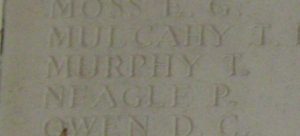
Samuel Morley Neat, Private, 29616, Royal Welsh Fusiliers. Samuel was born on 24 September 1896, the son of James Frank Neat and Elizabeth Margaret neat (nee Hope), of 70, King Street, Brynmawr. He won a scholarship at the Brynmawr County School, and, subsequently went to the Normal College, at Bangor, before gaining a position as a teacher Nantyglo Council School. Samuel enlisted at Bangor into the Royal Welsh Fusiliers on 21 January 1916 and was posted to the 21st Battalion, Royal Welsh Fusiliers at Kinmel Park for training. Samuel was drafted to France that summer, embarking at Folkestone aboard the SS Henrietta on 24 June 1916 and disembarked at Boulogne on the following day, before joining the 38th Infantry base Depot at Étaples. On 9 July 1916 he was posted to the 1st Battalion, Royal Welsh Fusiliers, which was on the Somme, attached to 22 Brigade, 7th Division. The Division had taken part in the opening assault of the Somme offensive on 1 July 1916, advancing from positions near Bois Francais, near Fricourt, and capturing the village of Mametz, one of the few successes of 1 July 1916. The battalion then took part in further attacks to push forwards, to the south of Mametz Wood, and upon being relieved, witnessed the troops of the 38th (Welsh) Division moving forward to launch its assault on Mametz Wood. On 14 July, with the wood taken, the 7th Division moved back into the line, with orders to capture Bazentin-le-Petit, before taking part in the terrible attacks on High Wood over the coming days. On 22 July the 1st RWF was relieved, moving back into reserve to rest and rebuild at La Chaussee. By 12 August the battalion had moved forwards to Dernancourt, and on 26 August marched further forward, to take part in the Divisions assault on Ginchy. The Division saw heavy fighting over the coming days, before the 1st RWF had another short break, but on 1 September the battalion received orders to push forwards again to launch a fresh assault on Ginchy from Montauban Alley. On 3 September 1916 the 1st RWF launched its assault, but suffered severe casualties, with over 200 officers and men killed, wounded or missing. Samuel was killed in action during the fighting that day. The 19-year-old has no known grave and is commemorated on the Thiepval Memorial, France.
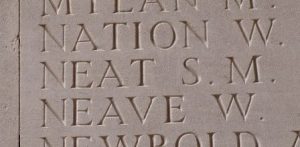
Frederick Nuth, Sergeant, SE/13769, Royal Army Veterinary Corps. Frederick was born in 1885, the son of Elijah Nuth, a grocer, and of Sarah Elizabeth Nuth (nee Hodges), of Brynmawr. His mother died when he was young, and his father remarried to her stepsister, Amelia Hammond, in 1887. Frederick enlisted at Woolwich into the Royal Army Service Corps soon after the outbreak of war and was drafted to France in 1916, joining the 8th Division Ammunition Column. His primary work was to care for the horses which the unit used to pull its transports. The division moved to the Somme in 1916, where it fought at the Battle of Albert. In March 1917 it followed the German Retreat to the Hindenburg Line, and later that year moved to Ypres, fighting at the Battle of Pilckem, and the Battle of Langemarck. In March 1918 the Division was on the southern end of the Somme and was hit hard following the launching of the German Spring offensive of 21 March 1918. After weeks of desperate rearguard actions, the division was relieved and moved south to the more peaceful Aisne sector to rest and refit. However, on 27 May 1918 the Germans launched the third, and final, phase of their Spring offensive along the Chemin-des-Dames Ridge, launching the Third Battle of the Aisne, and the 8th Division was once again caught up in ferocious fighting. Frederick was badly wounded during the day and was evacuated to a French Hospital, where he died of his wounds two days later, on 29 May 1918. The 33-year-old is buried in Chateau-Thierry (Les Chesneaux) French National Cemetery, France.
Horace Stanley Parsons, Private, 201306, South Wales Borderers. Horace was the son of William and Mary Ann Parsons, of Silver Lane, Crickhowell. He resided at Brynmawr prior to the war, where he worked as a grocer’s assistant, and played rugby for the Brynmawr Rugby Club. Horace enlisted into the 2/1st Brecknockshire Battalion, South Wales Borderers at Brecon at some time after the outbreak of war and was drafted out to India in 1916, joining the 1/1st Brecknockshire Battalion, which was on garrison duty at Mhow. Horace sadly became ill whilst in India and died of disease at Mhow on 17 October 1918, less than a month before the Armistice. The 35-year-old was buried in a mass grave in Mhow New Cemetery, Madhya Pradesh, so is commemorated on the Kirkee 1914-1918 Memorial, India. His nephew, Charles Parsons, died at home in 1918.
Arthur Plaster, Private, 33799, Royal Welsh Fusiliers. Arthur was born on 24 August 1895, the son of John Plaster and Elizabeth Plaster (nee Francis), of 10, Clock Row, Blaina. He worked as a collier as a young man and enlisted into the Royal Navy but was discharged as medically unfit due to poor eyesight. Arthur returned home, then enlisted into the South Wales Borderers at Brecon on 29 January 1913, but was discharged as medically unfit again on 24 October 1913, before returning to live with his brother James and his family at 24, George Street, Brynmawr, where he gained work as a collier. He re-enlisted into the 3rd Battalion, South Wales Borderers at Brynmawr on 29 September 1914 and was posted to Pembroke Dock, before being posted to Gibraltar to join the 1st (Garrison) Battalion, South Wales Borderers. On 8 May 1916 Arthur was drafted to France on 14 May 1916 and was transferred from the 38th Infantry Base Depot at Étaples to the 10th Battalion, Royal Welsh Fusiliers, which was attached to 76 Brigade, 3rd Division. By the middle of June, the Division had moved out of the Ypres Salient to billets around Eperlecques, where intense training was carried out prior to moving to the Somme sector by 2 July. The main Somme offensive had opened on the previous day, and the 3rd Division was ready to enter the fray, bivouacking at Bronfay Farm by 9 July and on 13 July moved into the captured German lines at Montauban Alley. The 10th RWF took part in heavy fighting over the coming days, and on 19 July received orders for an assault on Delville Wood. Just after midnight the following day the battalion moved forwards and became caught in in terrible fighting within the wood, the fighting of such severity that two men of the battalion were awarded the Victoria Cross. Arthur was initially posted as missing after the terrible fighting of 20 July 1916 and was later deemed to have been killed in action on that date. The 20-year-old has no known grave and is commemorated on the Thiepval Memorial, France.
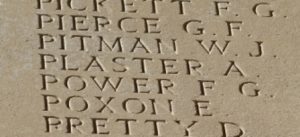
Jonah Pritchard, Sapper, 79418, Royal Engineers. Jonah was born in 1886, the son of William Pritchard and Mary Pritchard (nee Thompson), of 2, Glamorgan Square, Brynmawr. He worked as a coal hewer prior to enlisting at Abertridwr into the South Wales Borderers soon after the outbreak of war. Jonah embarked for France on 3 May 1915, initially to join the 1st Battalion, South Wales Borderers, but as a skilled miner, transferred to the 173rd Tunnelling Company, Royal Engineers. The company had formed in March 1915 and served under the Second Army in the Ypres Salient, digging mines and tunnels in the Hill 60 sector, before moving into the Fauquissart area near Laventie in northern France to begin work around Aubers Ridge and then in Cuinchy, a notoriously dangerous sector, where mining and countermining was prevalent. In January 1916, the 173rd Tunnelling Company moved to the Hulluch-Loos area and began driving shafts and galleries to counter enemy mining at various levels in the Hill 70 – Copse – Double Crassier area of Loos. On 8 March 1916 Jonah was among a party of men opening a new drive, No 15 mine, when a German shell hit them, killing him and fourteen of his comrades. The 28-year-old is buried in what is really a mass grave in Noeux-Les-Mines Communal Cemetery, France. His brother, William, had been killed at Gallipoli in 1915.
William Hammond Pritchard, Private, 11097, South Wales Borderers. William was born in 1893, the son of William Pritchard and Mary Pritchard (nee Thompson), of 2, Glamorgan Square, Brynmawr. He worked as a coal hewer prior to enlisting at Brecon into the South Wales Borderers just before the war. He embarked for France on 20 September 1914, joining the 1st Battalion, South Wales Borderers, which was on the Aisne, attached to 3 Brigade, 1st Division. The Division had taken part in the epic retreat from Mons to the Marne, where the Germans were stopped. The Germans then withdrew north and took up defensive positions north of the river Aisne, along the Chemin des Dames Ridge and the BEF advanced before launching a frontal attack upon the German positions. The battle ended in a stalemate and both sides dug-in, beginning the line of trenches which was to become known as the Western Front. The BEF then began moving to Flanders on 17 October, before advancing from Poperinghe past endless numbers of refugees and took up positions guarding the strategically vital city of Ypres, the 1st Division taking up positions near Langemarck by 21 October. Later that day the division was attacked by hordes of Germans, mainly young student-soldiers, who were mown down by the highly trained British soldiers. The Germans maintained their attacks over the coming days but were held at bay, sustaining terrible losses, and the line here stabilised, so by 27 October the 1st Division moved to positions near Zandvoorde, guarding the Menin Road. On 31 October 1914 the 1st Division faced its sternest test so far, when the Germans attacked its positions on the Menin Road, behind a fearsome artillery bombardment. William was wounded at Ypres at some time and was evacuated home. He returned home to Brynmawr on leave in February 1915 and was arrested for being drunk and disorderly. As soon as he had recovered his fitness, William was posted to Rugby to join the 2nd Battalion, South Wales Borderers, which had just returned from service in China and was attached to 87 Brigade, 29th Division. On 17 March 1915 the battalion sailed from Avonmouth with the Division, arriving at Alexandria on 29 March, before moving to Mudros. On 25 April 1915 the Division landed at Cape Helles, Gallipoli, as part of the original landing force which had been despatched to try and seize the Dardanelles Straits and force Turkey out of the war. The invasion forces failed to break the Turkish defences and the campaign became bogged down. William was killed in action during fighting at Turkey Trench on 11 June 1915. The 22-year-old is buried in Twelve Tree Copse Cemetery, Gallipoli. His brother, Jonah, was killed in France in 1916.
Thomas John Prout, Private, 1840, South Wales Borderers. Thomas was born in 1879, the son of William Prout and Leah Prout (nee Jenkins), of 114, King Street, Brynmawr. He married Emily Vaughan in 1905 and the couple lived at 65, King Street, Brynmawr. Thomas worked as a coal hewer for many years prior to enlisting at Brynmawr into the Brecknockshire Battalion, South Wales Borderers. The battalion was attached to the Welsh Division and moved to Pembroke Dock upon mobilisation. It was then withdrawn from the Division, entraining at Neyland, and on 29 October 1914 sailed from Southampton for Bombay aboard the SS Dilwari, where the battalion transhipped and sailed for Aden, arriving on 16 December 1914. The climate in Aden was fearsome, with scorching heat during the day, and with little to do, the men spent much of their free time playing football. Thomas took ill whilst at Aden and was evacuated aboard HM Transport Neuralia. He died of pneumonia aboard ship on 10 March 1915 and was buried at sea. The 35-year-old is commemorated on the Chatby Memorial, Alexandria, Egypt. One of his sons, William Alfred Vaughan, was killed in Italy in 1943.
Henry Richards, Private, 14901, South Wales Borderers. Henry was born in 1881, the son of Henry Richards and Frances Richards (nee Smith), of Ross-on-Wye. He enlisted into the 4th Battalion, King’s Shropshire Light Infantry and served for several years before coming to Brynmawr to work as a collier and in 1905 married Louisa Warburton, of 8, Miles Row, Brynmawr. The couple had moved to 21, River Row, Blaina by 1911 and Henry worked as a colliery labourer. Henry enlisted at Brynmawr into the South Wales Borderers soon after the outbreak of war and was drafted to France on 10 December 1914, joining the 1st Battalion, South Wales Borderers, which was attached to 3 Brigade, 1st Division and had moved from Ypres to billets at Outtersteene to rebuild following heavy losses over the preceding weeks. On 20 December the now rebuilt 1st SWB left for Merris, before the 1st Division took up new positions in the line at Festubert, a wet marshy area. On Christmas Day the men were in the trenches, cold and wet, when they were presented with their Princess Mary gift tins, which contained cards and gifts on behalf of the Royal Family. The line was relatively quiet over this period, but the trenches were flooded and in a terrible state. On 4 January 1915 the 1st SWB were relieved and moved back to Bethune, where the men were allowed to bathe and received issues of clean clothes, before moving back into the Festubert trenches four days later. The battalion remained in the line here until 14 January when it relieved the Black Watch at Givenchy. At dawn on 25 January 1915 the Germans hit their lines with an intensive artillery bombardment, before launching an infantry assault, breaking through 100 yards of trench and reaching Givenchy village. Heavy fighting raged throughout the day as the Germans were driven back and the line regained. During July 1916 the Division moved south, to join the great Somme offensive, and the 1st SWB reached Albert by 10 July, taking up billets in the town. On the morning of 15 July, the 1st SWB received orders to proceed via the recently captured Mametz Wood to the new front line, taking over support positions behind the 2nd Welsh near Bazentin-le-Petit Wood and remained in reserve whilst 3 Brigade launched an assault against Bazentin Ridge. On 18 July the 1st SWB withdrew to the old German front line near Lozenge Wood before moving back to Albert via Becourt Wood where the men enjoyed a cold bath in the river Ancre. The 1st SWB then endured another short spell in the line before moving back to Millencourt on 26 July to rest and did not proceed into the battle zone again until 15 August, when the battalion marched via Becourt Wood and on 20 August moved back into the front line at Bazentin-le-Petit Wood, when 3 Brigade relieved 1 and 2 Brigades. The brigade endured a terrible time here over the coming days, being almost incessantly shelled by German artillery. Henry was killed in action near Bazentin-le-Petit on 21 August 1916. The 34-year-old is buried in Peake Wood Cemetery, Fricourt, France. (The memorial shows James Richards, SWB, but that must be an error).
George South, Private, 43886, Welsh Regiment. George was born at Birmingham in 1896, the son of Philip South and Emma South (nee Tedstone). His father served during the Boer War of 1899-1901 and upon his return home moved his young family to Brynteg, Llanarth, near Raglan. Prior to the outbreak of war, the family had moved again to 17, Warwick Road, Brynmawr. George’s father re-enlisted as soon as war erupted, whilst George, who was working at the Ebbw Vale Steelworks, enlisted in November 1914 into the Welsh Regiment. He was drafted to Mesopotamia in September 1916, joining the 8th Battalion, Welsh Regiment, which was attached to the 13th (Western) Division. The division had been evacuated to Egypt from Gallipoli on 8 January 1916, concentrating at Port Said, where it held forward posts in the Suez Canal defences. On 12 February 1916 the Division began to move to Mesopotamia, to strengthen the force being assembled for the relief of the besieged garrison at Kut al Amara. By 27 March, the Division had assembled near Sheikh Saad and came under orders of the Tigris Corps, and then took part in the attempts to relieve Kut. However, after these efforts failed and Kut fell, the British force in the theatre was built up and reorganised. The Division then fought at the Battle of Kut al Amara, then at the capture of the Hai Salient and the capture of Dahra Bend. They took part in the passage of the Diyala, in the pursuit of the enemy towards Baghdad. George was wounded during the advance on Baghdad and died of his wounds on 25 February 1917. The 21-year-old is buried in Amara War Cemetery, Iraq.
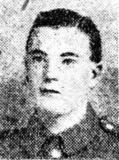
John George Alex Sutherland, Gunner, 48224, Royal Garrison Artillery. John was born on 23 March 1897, the son of John Alex Sutherland and Georgina Sutherland, of 116, Worcester Street, Brynmawr. His parents were both from Caithness, in Scotland, but had moved to Brynmawr due to his fathers work as a draper. John enlisted at Brynmawr into the Royal Garrison Artillery and was drafted to France early in 1916, being posted to the 61st Trench Mortar Battery, Royal Garrison Artillery. John was badly wounded soon after joining the battery and was evacuated to the 13th General Hospital at Boulogne, where he died of his wounds on 22 March 1916, the day before his 19th birthday. The 18-year-old is buried in Boulogne Eastern Cemetery, France.
Donald McDonald Taylor, Lance Corporal, PS/3299, Royal Fusiliers. Donald was born in 1896, the son of William McDonald Taylor, JP, and Florence Melissa Taylor (nee Evans), of Latheron, Brynmawr. He was educated at Brynmawr County School and then at Cardiff University but left University to enlist at Cardiff into the 21st (4th Public Schools) Battalion, Royal Fusiliers. The battalion was raised at Epsom on 11 September 1914 by the Public Schools and University Men’s’ Force, before moving to Ashstead, where it remained until March 1915, becoming attached to 98 Brigade, 33rd Division. On 14 November 1915 the battalion embarked for France with the division, moving to positions at Beuvry, in Northern France, for trench initiation. The sector had been the scene of the bloody Battle of Loos over the previous weeks, so was not an ideal place to initiate a fresh division, nonetheless, its infantry battalions spent the coming weeks rotating between duty in the trenches before moving to the L’Epinette and Festubert sector, then returned to the Annequin South sector. Donald’s battalion was in the front line on 11 January 1916 when Donald was killed by enemy shellfire. The 19-year-old is buried in Cambrin Churchyard Extension, France.
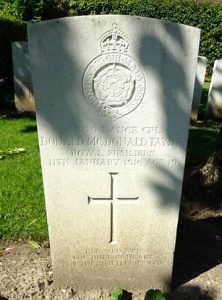
George Watson Taylor, Rifleman, 301743, London Regiment (London Rifle Brigade). George was born on 7 October 1895, the son of William Robert Taylor and Jemima Young Taylor (nee Watson), of Richmond Villa, Brynmawr. His father had come to Brynmawr from Scotland to set up his own Drapery business by 1891. George was educated at Brynmawr County School before becoming a clerk at the Admiralty and was attached to their Intelligence department. He enlisted in London into the London Rifle Brigade on 10 August 1915 and was posted to the 2/5th Battalion, London Regiment (London Rifle Brigade). The battalion had formed in London in September 1914, before moving to Hayward’s Heath to join 174 Brigade, 58th (London) Division, the completed its training in the Ipswich area before embarking for France on 25 January 1917, landing at Le Havre where the battalion entrained for Abbeville, then travelled on to Auxi-le-Chateau. Upon detraining, the men marched to billets at Rougefay, then over the coming days marched into the Somme sector, reaching Foncquevillers by 2 February. By the time that the division was ready to move into the line, the Germans had begun Operation Alberich, a strategic withdrawal to the shorter Hindenburg Line, to allow them to free up men to send to the Eastern front. As a result, the 58th Division began to follow up the German withdrawal, pushing forward from its reserve positions near Serre towards Boisleux-St-Marc and Mory towards Bullecourt, in the Arras Sector. On 9 April 1917 the Allies launched a great offensive in this Arras Sector, aimed at breaking the Hindenburg Line. On 15 May the 2/5th London Rifles moved forwards into positions southwest of Bullecourt, in readiness to attack on the following morning. At dawn on 16 May 1917 the battalion moved into its attack positions, but soon received orders that their assault would be delayed by 24 hours. George was killed in action during the day. The 21-year-old was originally buried by the roadside in Bullecourt, but the location of is grave was later lost, so he is commemorated on the Arras Memorial, France.
Henry Idris Thomas, Private, 29043, South Wales Borderers. Henry was born in 1896, the son of Reverend David Thomas, and of Jane Elizabeth Thomas, of Tyr Onnen, 9, Alma Street, Brynmawr. His father was pastor of Bailey Street Presbyterian Church, Brynmawr. Henry was educated at Brynmawr County School before gaining a position as an assistant chemist at Ebbw Vale. He enlisted into the South Wales Borderers in January 1917 and was drafted to France in May, being posted to the 5th Battalion, South Wales Borderers, which was the Pioneer Battalion to the 19th (Western) Division. Henry joined the battalion at Ypres, where it was under the command of Courtney Vow Trower, a well-regarded officer. The battalion was hard at work constructing tramways and digging trenches in preparation for the forthcoming assault on Messines Ridge. Two main tramways were under construction by the 5th SWB: the Lille Gate tramway and the Zillebeke tramway, and the battalion was enduring a tough time, constantly losing men through German artillery fire. The Battle of Messines Ridge opened at dawn on 7 June 1917, heralded by the blowing of some 21 vast underground mines, which obliterated the German lines. The British then launched a massed infantry assault, supported by large numbers of tanks, upon the shattered German defenders who survived. The men of the 5th SWB followed up the infantry assault, consolidating the freshly gained ground and constructing mule-ways and cart tracks, to enable the front-line to be supplied. Henry was killed in action whilst carrying out this vital work that day. The 20-year-old is buried in Voormezeele Enclosure No. 3, Belgium.
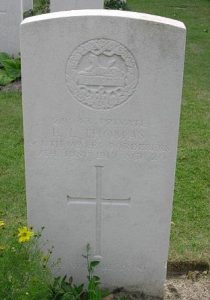
William James Turner, Lance Corporal, 1304, Monmouthshire Regiment. William was born in 1893, the son of Thomas Turner and Mary Ann Turner (nee Pugh), of 4, Chapel Street, Brynmawr. He worked as a coal hewer prior to the war. William, like his elder brother Wilfred, had enlisted into the 1/3rd Battalion, Monmouthshire Regiment some time prior to the war. The battalion mobilised at Abergavenny attached to the Welsh Border Brigade, Welsh Division, before moving to Pembroke Dock. On 10 August 1914 the Division moved to Oswestry before moving to Northampton, then spent Christmas at Bury St. Edmunds before moving to Cambridge. In February 1915 the 3rd Monmouth’s left the Welsh Division and landed in France on 14 February, before moving to the Ypres Salient. On 3 March 1915 the battalion joined 83 Brigade, 28th Division. On 8 April the 3rd Monmouth’s relieved a French Division in the sector east of the Polygon Wood to begin its first tour in the trenches. The battalion was relieved four days later, and marched to billets in Ypres, then on 17 April relieved the 5th King’s Own in the front line, to begin a spell which would last for 17 days without relief. On 22 April, just to the north, the Germans launched the first gas attack of the war upon French Colonial troops at Gravenstafel, heralding the opening of the Second Battle of Ypres. The fighting remained to the north of Polygon Wood until 3 May, when the Germans widened their attacks and the Polygon Wood sector was evacuated by the 28th Division, which fell back on the G.H.Q. line at Potijze. Over the coming days their new positions were shelled mercilessly, then on 8 May the Germans attacked. Despite heavy losses the Division held firm and later that day three Companies of the 3rd Monmouth’s moved back into billets at Vlamertinghe, leaving B Company in the line. By now casualties had become so severe that on 10 May a Composite Battalion was formed from remnants of 83 Brigade, under Lt Col Gough, and proceeded to the G.H.Q. line at Potijze. Wilfred was killed beside his elder brother Wilfred on 11 May 1915. The 22-year-old has no known grave and is commemorated on the Ypres (Menin Gate) Memorial, Belgium. (The Brynmawr Cenotaph shows ‘SERGT. TURNER, W. J. MONS’ This appears to be a mix up between the two brothers, showing the initials of one and the rank of the other. Also, only one brother is commemorated on the cenotaph!
Albert James Vaughan, Private, 267547, Monmouthshire Regiment. Albert was born in 1887, the son of William Vaughan and Mary Ann Vaughan (nee Thomas), of 3, Brook Street, Brynmawr. He worked as a coal hewer prior to enlisting at Brynmawr into the Monmouthshire Regiment. Albert was drafted to France in the summer of 1916, joining the 1/2nd Battalion, Monmouthshire Regiment, which was, by then, the Pioneer Battalion to the 29th Division. The Division had suffered terrible casualties at Beaumont Hamel, during its assault on Y-Ravine on 1 July 1916 and, although severely depleted, the Division remained in the line here over the coming weeks, in trying conditions. On 27 July the Division entrained for Flanders, detraining at Proven before relieving the 6th Division at Ypres. The Division held the line here over the coming weeks as it rebuilt its strength and the 2nd Monmouth’s worked hard on improving trenches and digging new communications trenches. The battalion then worked on the Menin Road, erecting elephant shelters, then on 4 October the Division was relieved and entrained south for the Somme once more, moving to Trônes Wood, before joining the latter stages of the Somme offensive. The Division wintered on the Somme, with the 2nd Monmouth’s working on road repairs around Montauban, then at Ginchy, Flers and Morval. The 2nd Monmouth’s moved into reserve at the end of December and moved to Fourdrinoy, where the men trained in infantry assault manoeuvres. On 12 January 1917 the battalion began marching back into the battle area, taking over positions near Morval, and began supplying working parties around Montauban once more. The Division then received orders to mount an attack, so at dawn on 27 January 1917 the 2nd Monmouth’s began work on two new communication trenches to connect the old front line to the new objectives. The 2nd Monmouth’s then enjoyed a spell out of the line at Méaulte where the men carried out a strict training regimen, which included several mock attacks and rifle shooting, before returning to the Hardecourt area and began work again around Wedgewood and Sailly Saillisel. Soon afterwards, the Germans launched Operation Alberich, a strategic withdrawal to the shorter Hindenburg Line, to allow them to free up men to send to the Eastern front. The 29th Division was then relieved and moved to positions in front of Arras, facing Monchy-le-Preux. The Division then began to prepare for the forthcoming Battle of Arras. At dawn on 23 April 1917, the Division launched an assault on Monchy-le-Preux. The 2nd SWB captured the front-line German trench and advanced some 300 yards beyond before consolidating its gains. Albert was killed in action at some time during the day. The 29-year-old is buried in Vis-En-Artois British Cemetery, Haucourt, France.
Charles Graham Vaughan, Private, 61464, Royal Welsh Fusiliers. Charles was born in 1898. He was adopted by William and Emma Skilling, of 138, Worcester Street, Brynmawr soon after his birth, and the couple raised him as their own son. Charles enlisted at Brecon into the army and was posted to Kinmel Park for training, before being drafted to France in the summer of 1916, joining the 14th Battalion, Royal Welsh Fusiliers. The battalion was attached to 113 Brigade, 38th (Welsh) Division and had taken part in the famous assault on Mametz Wood on 10 July 1916. After two days of ferocious hand-to-hand fighting, the wood was cleared up to its northern edge, before the battered Division was relieved. It then took over a section of the front at Hébuterne before moving to the Ypres Salient and taking over the Canal Bank sector at Boesinghe. The infantry battalions of the Division then began carrying out the normal pattern of rotation in the trenches, four days in the front, four in support and four in reserve, whilst also working on trench improvement, digging new trenches, and also carrying out regular patrols and trench raids. On 31 July 1917 the Division launched its famous assault on the Pilckem Ridge, capturing Iron Cross and reaching its objective of the Steenbeek, then played a supporting role in the Battle of Langemarck. The Division was transferred to the Sailly-sur-la-Lys sector in September and remained in the area over the winter. On 29 December Charles was in billets with the battalion at Rue de la Dormiore, when a large German artillery shell struck one of the buildings housing the men, causing eleven casualties. Seven men were killed instantly, whilst Charles and three others were rushed to a Casualty Clearing Station at Éstaires. Charles died there of his wounds on the following day, 30 December 1917. The 19-year-old is buried in Éstaires Communal Cemetery and Extension, France.
Edward Thomas Watkins, Private, 26225, South Wales Borderers. Edward was born in Llanelly in 1879. He had married in 1905 and lodged with his wife Ellen Watkins at Foundry House, Alma Road, Brynmawr. Edward worked as a labourer prior to enlisting into the South Wales Borderers at Brynmawr in 1915. He was drafted to France in the spring of 1916 and was posted to the 1st Battalion, South Wales Borderers, which was at Loos attached to 3 Brigade, 1st Division. During July 1916 the Division moved south, to join the great Somme offensive, and the 1st SWB reached Albert by 10 July, taking up billets in the town. On the morning of 15 July, the 1st SWB received orders to proceed via the recently captured Mametz Wood to the new front line, taking over support positions behind the 2nd Welsh near Bazentin-le-Petit Wood and remained in reserve whilst 3 Brigade launched an assault against Bazentin Ridge. On 18 July the 1st SWB withdrew to the old German front line near Lozenge Wood before moving back to Albert via Becourt Wood where the men enjoyed a cold bath in the river Ancre. The 1st SWB then endured another short spell in the line before moving back to Millencourt on 26 July to rest and did not proceed into the battle zone again until 15 August, when the battalion marched via Becourt Wood and on 20 August moved back into the front line at Bazentin-le-Petit Wood, when 3 Brigade relieved 1 and 2 Brigades. The division then saw further heavy fighting on the flank of the Australian Corps during the Battle of Pozieres, then saw further fighting during the Battles of Flers-Courcelette and Morval. After wintering on the Somme, the division followed the German withdrawal to the Hindenburg Line in early 1917, before being briefed for an operation on the Flanders Coast and moved there during the summer of 1917. The operation, Operation Hush, was a planned offensive along the coast if the Passchendaele offensive was successful but was called off when the troops at Passchendaele became bogged down in the mud and the 1st Division was instead transferred to Ypres in October 1917. The Division took up positions near Valour Farm, on the lower edge of the ridge, by 9 November and prepared to launch an assault on the following morning. The objectives were a series of ruined farms which had been fortified by the Germans and at dawn on 10 November 1917 the Division launched its assault. The men arose from the trenches and began to advance through thick mud, but the men got caught up in their own artillery barrage. Edward was killed in action during this assault on Passchendaele Ridge on 10 November 1917. The 38-year-old has no known grave and is commemorated on the Tyne Cot Memorial, Belgium.
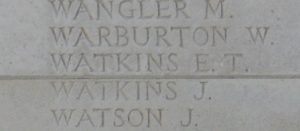
William John Watkins, Private, 17968, South Wales Borderers. William was born in 1884, the son of Thomas Watkins and Mary Ann Watkins (nee Williams), of 48, Somerset Street, Brynmawr. He worked as a coal hewer prior to enlisting at Brynmawr into the 5th Battalion, South Wales Borderers. The battalion formed at Brecon in September 1914, before moving to Park House Camp, near Tidworth to join 58 Brigade, 19th (Western) Division. In December 1914 the battalion moved to Basingstoke in billets, then on 10 January 1915 became converted to the Pioneer Battalion for the 19th Division. The Division completed its training at Bulford and Perham Down, before embarking for France and landing at Le Havre on 16 July 1915. The entire 19th Division then moved to the Nursery Sector at Calonne for trench initiation alongside the Dehra Dun Brigade. The infantry battalions of the division then began carrying out the usual routines of rotating in the trenches: four days in the front line; four in support; and four in reserve, interspersed with training regimes and carrying out working parties and trench raids. Just south, the British launched a great offensive around the town of Loos on 25 September 1915, and the 19th Division was ordered to attack from its positions at the same time, to attempt to draw enemy attention away from the main battle area. The assault was a disaster, and heavy casualties were suffered by the 19th Division for no gain. The following year the Division moved to the Somme, where it took part in the second wave of the attack on Ovillers-La Boiselle on 1 July, capturing the village at heavy cost. It then fought through the Battle of Poziéres. William was wounded whilst the 5th SWB was at work around Mametz Wood at the end of July and was evacuated to hospital at Rouen, where he died of his wounds on 7 August 1916. The 32-year-old is buried in St. Sever Cemetery, Rouen, France.
Christopher James Weale, Private, 26582, South Wales Borderers. Christopher was born in 1893, the son of Christopher Weale and Elizabeth Weale (nee Gregory), of 7, George Street, Brynmawr. He left Brynmawr to become a Drapers assistant at Newport as a young man, then set up his own Drapery at Ebbw Vale prior to the war. Christopher enlisted at Ebbw Vale into the South Wales Borderers in the spring of 1915 and was drafted to Egypt early in 1916, joining the 4th Battalion, South Wales Borderers, which was attached to 40 Brigade, 13th (Western) Division. The division had been evacuated from Gallipoli to Mudros on 8 January 1916 before moving to Egypt, then on 15 February 1916 embarked at Suez, arriving at Basra on 4 March to join the forces being assembled to attempt to relieve the besieged garrison of Kut-al-Amara. Unfortunately, the relief failed, and Kut fell to the Turks. The Division then took part in the advance through Mesopotamia, which was to successfully liberate the country from 100’s of years of Ottoman rule. By 28 May 1918, Divisional HQ had moved to Dawalib, and it remained here until the end of the war, with many working parties being supplied for work on maintaining roads. On 18 October the 4th SWB left Kifri and began a march north towards Kirkuk, together with two artillery batteries and the 40th Brigade Machine Gun Corps. The column, known as Lewins Column, continued its march over the coming days in hard conditions and on 24 October 1918 the column came in contact with the enemy, who opened up an artillery barrage upon it. Christopher was killed during this advance to Kirkuk on 24 October 1918, the sole man killed that day. The 25-year-old has no known grave and is commemorated on the Basra Memorial, Iraq.
Arthur George Weaver, Private, 25542, South Wales Borderers. Arthur was born in 1881, the son of William George Weaver and Caroline Weaver (nee Watkins), of Shetton, Mansel Lacy, Hereford. He married Sibbynah Jones, a schoolteacher from Nantyglo, in 1911 and the couple set up home at 3, Osborne Road, Brynmawr. Arthur enlisted into the South Wales Borderers in the spring of 1915 and was posted to the 12th Battalion, South Wales Borderers. The battalion was raised at Newport by the Welsh National Executive Committee in March 1915 as a bantam Battalion, then in July 1915 moved to Prees Heath to join the Welsh Bantam Brigade. During September 1915 the Brigade moved to Aldershot and became 119 Brigade, in the 40th (Bantam) Division. In December 1915 the Division moved to Blackdown to complete its training before embarking for France and landing at Le Havre on 2 June 1916. The Division moved to positions around Lillers before taking over the North Maroc Sector, near Loos, for trench initiation and once acclimatised was left to hold the sector itself over the coming months. The infantry battalions of the Division then began the usual routines of rotating for duty in the trenches: normally four days in the front line; four in support and four in reserve. Late in 1916 the Division moved south to the Somme, and fought at the Battle of the Ancre, before remaining in the sector over the winter. In March 1917 the Germans withdrew to their shortened line, called the Hindenburg Line, and the 40th Division was among the units which followed the withdrawal. Later in the year the Division took part in the Battle of Cambrai and launched an attack on Bourlon Wood on 23 November 1917. The attack was carried out by 119 Brigade, led by the 12th SWB and 19th RWF. The 17th Welsh was in support for the initial assault, but was soon ordered to advance, to support the two attacking battalions. Heavy fighting raged within the wood over the coming days, with the 18th Welsh also being thrown forwards into the fight, and the Division suffered terribly. Arthur was badly wounded during the battle and was evacuated to a nearby Field Ambulance, where he died of his wounds on 26 November 1917. The 37-year-old is buried in Rocquigny-Equancourt Road British Cemetery, Manancourt, France. His brother, Frederick Weaver, was killed at Arras on 3 May 1917.
Joseph Webb, Private, 11523, South Wales Borderers. Joseph was born in 1895, the son of John Webb and Catherine Webb, of the Back of the Black Lion Inn, Brynmawr. The family moved to 84, Glandwr Street, Abertillery prior to the war, but Joseph left home as a young man to enlist at Brecon into the South Wales Borderers. Joseph embarked for France on 11 January 1915 and was posted to the 1st Battalion, South Wales Borderers, which was attached to 3 Brigade, 1st Division. The division had suffered terrible casualties during its vital actions during the defence of Ypres the previous weeks and had just moved to new positions near Outtersteene to rebuild. On 20 December the now rebuilt 1st SWB left for Merris, before the 1st Division took up new positions in the line at Festubert, a wet marshy area. On Christmas Day the men were in the trenches, cold and wet, when they were presented with their Princess Mary gift tins, which contained cards and gifts on behalf of the Royal Family. The line was relatively quiet over this period, but the trenches were flooded and in a terrible state. On 4 January 1915 the 1st SWB were relieved and moved back to Bethune, where the men were allowed to bathe and received issues of clean clothes, before moving back into the Festubert trenches four days later. The battalion remained in the line here until 14 January when it relieved the Black Watch at Givenchy. At dawn on 25 January 1915 the Germans hit their lines with an intensive artillery bombardment, before launching an infantry assault, breaking through 100 yards of trench and reaching Givenchy village. Heavy fighting raged throughout the day as the Germans were driven back and the line regained. Over the coming weeks, the infantry battalions of the division rotated for duty in the front line, support, and reserve trenches, in horrendous conditions. Joseph was one of three men wounded during a routine spell in the front line at Richebourg on 19 April and was evacuated to No 3 Field Ambulance, where he died of his wounds on the following day, 20 April 1915. The 19-year-old is buried in Bethune Town Cemetery, France.
Robert Percival Weeks, Private, 3949, Australian Infantry. Robert was born in 1890, the son of William Weeks and Jane Weeks (nee Rees), of 49, Bailey Street, Brynmawr. His mother died when he was just five years old, and his father remarried to Jane Ann Samuel. Robert was educated at Brynmawr County School and at Monkton School at Cardiff prior to emigrating to Australia, where he found work as a cattle dealer and meat salesman at Sydney. He enlisted at Holdsworthy, New South Wales into the 9th Reinforcement Draft for the 19th Battalion, Australian Infantry on 26 October 1915 and embarked at Sydney with the draft aboard HMAT Runic on 20 January 1916. The ship formed part of a convoy which sailed through the Suez Canal for Alexandria, where the men joined the 19th Battalion. The battalion then spent several weeks training and reorganising before embarking for Marseilles on 18 March, then entrained for Northern France as part of the 5th Brigade, 2nd Australian Division. The division carried out a period in the line in the Fleurbaix sector before moving south in July to take part in the Somme offensive. The 2nd Division saw its first major offensive around Pozieres between late July and the end of August 1916, before the Australians were relieved and moved back to Flanders. After a spell in a quieter sector of the front in Belgium, the 2nd Division came south again in October and the 19th Battalion attacked near Flers between 14 and 16 November, in conditions described as the worst ever encountered by the AIF during the entire war. In 1917, the 19th Battalion took part in the great advance which followed the German withdrawal to the Hindenburg Line and was one of four battalions to defeat a counterattack by the Germans at Lagnicourt. The 2nd Division then took part in the bloody Battle of Bullecourt in May 1917 before the Australians moved north into the Ypres Salient later that summer, to join the great push for Passchendaele Ridge. The 2nd Division moved into the line north of the Menin Road and on 20 September 1917 launched an assault along an 8-mile front, together with ten other divisions. The 2nd Division advanced over 1,000 yards and had just attained its objectives when Robert was blown up with a shell, together with several of his comrades. The 27-year-old has no known grave and is commemorated on the Ypres (Menin Gate) Memorial, Belgium. Two of his cousins, the brothers Herbert Ward Meredith Weeks and Henry Russell Weeks, both born in Brynmawr, were also killed during the war.
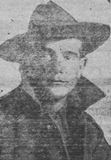
Alfred Werrett, Private, 2344, Monmouthshire Regiment. Alfred was born in 1895, the son of George Werrett and Mary Ann Werrett (nee Firmston), of The Back of the Black Lion Inn, Brynmawr. He worked as a coal miner prior to enlisting at Abergavenny into the 3rd Battalion, Monmouthshire Regiment. The battalion mobilised at Abergavenny attached to the Welsh Border Brigade, Welsh Division, before moving to Pembroke Dock. On 10 August 1914 the Division moved to Oswestry before moving to Northampton, then spent Christmas at Bury St. Edmunds before moving to Cambridge. In February 1915 the 3rd Monmouth’s left the Welsh Division and landed in France on 14 February, before moving to the Ypres Salient. On 3 March 1915 the battalion joined 83 Brigade, 28th Division. On 8 April the 3rd Monmouth’s relieved a French Division in the sector east of the Polygon Wood to begin its first tour in the trenches. The battalion was relieved four days later, and marched to billets in Ypres, then on 17 April relieved the 5th King’s Own in the front line, to begin a spell which would last for 17 days without relief. On 22 April, just to the north, the Germans launched the first gas attack of the war upon French Colonial troops at Gravenstafel, heralding the opening of the Second Battle of Ypres. The main fighting remained to the north of Polygon Wood for now, but Alfred was killed near Polygon Wood on 2 May 1915 as the battalion was carrying trench stores back to the rear, in readiness for a planned withdrawal. The 21-year-old has no known grave and is commemorated on the Ypres (Menin Gate) Memorial, Belgium.
Alfred Aaron Williams, Private, 11443, South Wales Borderers. Alfred was born in 1896, the son of John Aaron Williams and Sarah Ann Williams (nee Owen), of Hope Cottage, King Street, Brynmawr. He worked as a coal hewer prior to enlisting at Brecon into the South Wales Borderers soon after the outbreak of war. Alfred embarked for France on 13 November 1914 and joined the 1st Battalion, South Wales Borderers, which was attached to 3 Brigade, 1st Division. The division had suffered terrible casualties during its vital actions during the defence of Ypres the previous weeks and had just moved to new positions near Outtersteene to rebuild. On 20 December the now rebuilt 1st SWB left for Merris, before the 1st Division took up new positions in the line at Festubert, a wet marshy area. On Christmas Day the men were in the trenches, cold and wet, when they were presented with their Princess Mary gift tins, which contained cards and gifts on behalf of the Royal Family. The line was relatively quiet over this period, but the trenches were flooded and in a terrible state. On 4 January 1915 the 1st SWB were relieved and moved back to Bethune, where the men were allowed to bathe and received issues of clean clothes, before moving back into the Festubert trenches four days later. The battalion remained in the line here until 14 January when it relieved the Black Watch at Givenchy. At dawn on 25 January 1915 the Germans hit their lines with an intensive artillery bombardment, before launching an infantry assault, breaking through 100 yards of trench and reaching Givenchy village. Heavy fighting raged throughout the day as the Germans were driven back and the line regained. A relatively quiet spell then followed, before the 1st Division took part in the Battle of Aubers Ridge on 9 May 1915, when it attacked alongside the Meerut Division. The attack of 3 Brigade was held up by a flooded ditch, which the men forded, before being hit by heavy machine-gun fire, and a large number of casualties were suffered before the survivors withdrew. After the battle of Aubers, the Division took over a section of old French trenches, where it received drafts of reinforcements. On 20 May, the Division was moved to the Cuinchy area, where it endured a great deal of bombing and rifle grenading, in a very hostile sector. The 1st SWB had enjoyed a brief rest in billets at Bethune at the beginning of June, then on 16 June 1915 relieved the 2nd Welsh in the line near Beuvry. Alfred was killed in action just after the relief that day. The 19-year-old is buried in Cambrin Military Cemetery, France. His brother, Joseph Williams, was killed nearby at Loos, just three months later.
Daniel Williams, Private, 2338, Monmouthshire Regiment. Daniel was born in 1893, the son of Alfred Williams and Bridget Williams (nee O’Connell), of 24, Worcester Street, Brynmawr. He worked as a collier at the Stones Slope Colliery at Nantyglo prior to the war. Daniel enlisted at Abergavenny into the 3rd Battalion, Monmouthshire Regiment on 14 September 1914. The battalion mobilised at Abergavenny attached to the Welsh Border Brigade, Welsh Division, before moving to Pembroke Dock. On 10 August 1914 the Division moved to Oswestry before moving to Northampton, then spent Christmas at Bury St. Edmunds before moving to Cambridge. In February 1915 the 3rd Monmouth’s left the Welsh Division and landed in France on 14 February, before moving to the Ypres Salient. On 3 March 1915 the battalion joined 83 Brigade, 28th Division. On 8 April the 3rd Monmouth’s relieved a French Division in the sector east of the Polygon Wood to begin its first tour in the trenches. The battalion was relieved four days later, and marched to billets in Ypres, then on 17 April relieved the 5th King’s Own in the front line, to begin a spell which would last for 17 days without relief. On 22 April, just to the north, the Germans launched the first gas attack of the war upon French Colonial troops at Gravenstafel, heralding the opening of the Second Battle of Ypres. The fighting remained to the north of Polygon Wood until 3 May, when the Germans widened their attacks and the Polygon Wood sector was evacuated by the 28th Division, which fell back on the G.H.Q. line at Potijze. Daniel had been killed on the previous day, 2 May 1915, whilst the 3rd Monmouth’s were carrying trench stores back from the trenches in anticipation of this evacuation. The 21-year-old has no known grave and is commemorated on the Ypres (Menin Gate) Memorial, Belgium.
David Jenkin Williams, Second Lieutenant, King’s Shropshire Light Infantry. David was born in 1890, the son of Reverend William Williams, Minister of Capel Sion, Pontygwaith, and of Elizabeth Williams, of 5, Llewellyn Street, Pontygwaith. He was educated at Pontygwaith and at Porth County School before obtaining his BA at Cardiff University. David then became a schoolteacher at Ystalyfera County School, before leaving to take up a position as assistant master at Brynmawr County School. He enlisted into the Inns of Court Officer Training Corps and was commissioned from the OTC as Second Lieutenant into the 1st Battalion, Monmouthshire Regiment in 1916. David embarked for France on 11 January 1917 and was posted to the 6th Battalion, King’s Shropshire Light Infantry, which was attached to 60 Brigade, 20th (Light) Division. The division was on the Somme, holding the line in the Morval sector, when David arrived. On the night of 13 March, the Germans evacuated their trenches in front of the division, and began their withdrawal to the Hindenburg Line, so the 20th Division was among the units which followed the withdrawal. The advance ended around Havrincourt Wood, where the 20th Division settled into new positions facing the Hindenburg Line and on the following month launched several assaults, as part of the Battle of Arras. The division remained here until the middle of June when it was relieved and began moving north into the Ypres Salient. The 20th Division was in support to the 38th (Welsh) Division when the Passchendaele offensive opened on 31 July 1917 and on 6 August relieved the battered Welshmen in their new positions facing Langemarck. On 16 August the 20th Division assaulted the village, successfully capturing the ruined village whilst under ferocious artillery fire. The 6th KSLI withdrew to camp at Proven after the assault and had a brief rest before returning to the action around Langemarck. On the morning of 20 September 1917, the 6th KSLI launched an assault against Eagle Trench from its new positions at Langemarck, but upon reaching White Trench were beaten back by a German counterattack. David was badly wounded during the initial fighting and was evacuated back to a nearby Field Ambulance where he died of his wounds that same day. The 27-year-old is buried in Cement House Cemetery, Belgium.
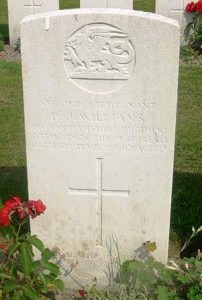
Joseph Aaron Williams, Private, 11385, South Wales Borderers. Joseph was born in 1894, the son of John Aaron Williams and Sarah Ann Williams (nee Owen), of Hope Cottage, King Street, Brynmawr. He worked as a coal hewer prior to enlisting at Brecon into the South Wales Borderers soon after the outbreak of war. Joseph embarked for France on 26 January 1915 and joined the 1st Battalion, South Wales Borderers, which was attached to 3 Brigade, 1st Division. The division was holding a sector of the line near Givenchy when Joseph arrived, joining his brother, Alfred who had been with the battalion for two months. A relatively quiet spell then followed, before the 1st Division took part in the Battle of Aubers Ridge on 9 May 1915, when it attacked alongside the Meerut Division. The attack of 3 Brigade was held up by a flooded ditch, which the men forded, before being hit by heavy machine-gun fire, and a large number of casualties were suffered before the survivors withdrew. After the battle of Aubers, the Division took over a section of old French trenches, where it received drafts of reinforcements. On 20 May, the division was moved to the Cuinchy area, where it endured a great deal of bombing and rifle grenading, then at the latter end of June it moved to the Vermelles area, in preparation for the battle of Loos. The Battle of Loos was launched on 25 September 1915, following the release of large quantities of poison gas by the British. 3 Brigade moved off with the 2nd Munster’s on the right, the 2nd Welsh in echelon, to their left, and the 1st SWB in support. The gas had blown back over the British lines, so conditions during the advance were horrendous, then whilst advancing past the Vermelles-Hulluch Road the Brigade came under heavy machine-gun fire. Joseph was killed in action during the assault that day. The 22-year-old has no known grave and is commemorated on the Loos Memorial, France. His brother, Alfred Aaron Williams, had been killed nearby just three months previously.
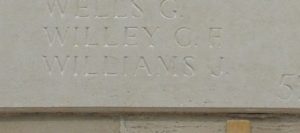
Joseph Wills, Private, 2072, Welsh Guards. Joseph was born in 1884, the son of John Wills and Jane Wills (nee Jones), of Six Bells. By 1901 the family had moved to the Rock and Fountain Inn, 84, Worcester Street, Brynmawr, where Jane was the Innkeeper. Joseph found work as a coal hewer, and in 1904 married Polly Havard. The couple then settled at 22, Clarence Street, Brynmawr, where three daughters were born over the coming years. Joseph enlisted at Brynmawr into the Welsh Guards in the spring of 1915. The Regiment had been raised by Royal Warrant of 26 February 1915, at White City, before landing at Le Havre on 18 August 1915, becoming attached to 3rd Guards Brigade, Guards Division. The Division saw its first major action during the Battle of Loos, which began on 25 September 1915, before also taking part in the Action of the Hohenzollern Redoubt. The Division had a brief rest in the Calais area, before moving to the Ypres Salient, and held the line at Potijze for several months. At the end of July 1916, the Division withdrew from Ypres and moved to the Somme, before holding the line north of the Ancre for a short period. By 25 August the Guards Division had moved slightly south, and had marched passed Corbie, to Mericourt-L’Abbe. By 9 September the Guards had passed Ginchy, and moved into positions at Guillemont, prior to taking part in the Battle of Flers-Courcelette, the first-time tanks were ever used in action. The battle began on 15 September and the Guards Division attacked behind three tanks, reaching the Ginchy to Lesbœufs road before the tanks either broke down or became bogged down. The Welsh Guards, in reserve, joined the fray on the following day, suffering heavy casualties during its assault on Lesbœufs. The battalion was relieved that night and had a short rest in bivouacs at Trônes Wood before returning into the line during the evening of 22 September 1916, relieving the 4th Grenadier Guards. Joseph was killed in action during the relief that night. The 31-year-old has no known grave and is commemorated on the Thiepval Memorial, France.
Albert Wilson, Private, 14788, South Wales Borderers. Albert was born in 1890, the son of John Wilson and Pamela Jane Wilson (nee Price), of 108, King’s Street, Beaufort. By 1911 he was living with his elder brother, John Henry Wilson, and his family at 48, Somerset Street, Brynmawr and was working as a coal hewer for the Ebbw Vale Company. Albert had served with the 1st Volunteer Battalion, South Wales Borderers as a young man, then enlisted into the Brecknockshire Battalion, South Wales Borderers, a Territorial Army unit, on 4 May 1908, and had attended every annual TA summer camp over the coming years: at Brecon; Porthcawl; Aberystwyth; Haverfordwest and Hereford. As a result, he was a member of the Special Reserve and was mobilised at the outbreak of war, joining the South Wales Borderers at Brecon. Albert was drafted out to the Mediterranean in May 1915 and landed at Gallipoli on 25 May 1915, joining the 2nd Battalion, South Wales Borderers, which was attached to 87 Brigade, 29th Division. The battalion was holding Turkey Trench, in Gully Ravine, in the Helles Sector when Albert arrived and had taken part in the original landings at Cape Helles on 25 April. Gully Ravine led up to Geoghegan’s Bluff, with Turkey Trench branching off to the east and was a particularly hostile sector. On 28 June 1915 the battalion supported an assault by the Border Regiment against Boomerang Trench, advancing through a hail of shrapnel, taking their objectives before digging in. Albert was killed in action during the fighting that day. The 25-year-old has no known grave and is commemorated on the Helles Memorial, Gallipoli. His brother, John Henry Wilson, died in France in April 1916.
George William Wilson, Private, 39397, South Wales Borderers. George was born in Kingsland, London on 30 August 1895, the son of Thomas Walter Wilson and Elizabeth Jane Wilson (nee Glover). His father died in 1900, so George and his siblings were sent away within the coming years, and by 1911 George was lodging with Mary Jane Lawrence, at 41, Church Street, Blaina, where he worked as an assistant boot repairer. He then moved to Brynmawr, where he remained until enlisting at Abertillery into the Monmouthshire Regiment in the spring of 1915. George was drafted to France in the spring of 1916, joining the 5th Battalion, South Wales Borderers, which was the Pioneer Battalion for the 19th Division. The Division completed its training at Bulford and Perham Down, before embarking for France and landing at Le Havre on 16 July 1915. The entire 19th Division then moved to the Nursery Sector at Calonne for trench initiation alongside the Dehra Dun Brigade. The infantry battalions of the division then began carrying out the usual routines of rotating in the trenches: four days in the front line; four in support; and four in reserve, interspersed with training regimes and carrying out working parties and trench raids. Just south, the British launched a great offensive around the town of Loos on 25 September 1915, and the 19th Division was ordered to attack from its positions at the same time, to attempt to draw enemy attention away from the main battle area. The assault was a disaster, and heavy casualties were suffered by the 19th Division for no gain. The following year the Division moved to the Somme, where it took part in the second wave of the attack on Ovillers-La Boiselle on 1 July, capturing the village at heavy cost. It then fought through the Somme Battles of Pozieres and the Ancre in 1916, wintering on the Somme, in terrible conditions. The 5th SWB were worked hard during this period, repairing roads, tracks and trenches in the Hébuterne Sector, as well as laying light railway tracks. George was badly wounded whilst at work in this area and died of his wounds that same day, on 16 February 1917. The 22-year-old is buried in Varennes Military Cemetery, France.
John Henry Wilson, Private, 14919, South Wales Borderers. John was born in 1882, the son of John Wilson and Pamela Jane Wilson (nee Price), of 108, King’s Street, Beaufort. He married Emma Rosina Sage in 1902 and the couple set up home at 48, Somerset Street, Brynmawr. John worked as a coal hewer for the Ebbw Vale Company prior to the war. Like his younger brother, Albert, John had served with the 1st Volunteer Battalion, South Wales Borderers as a young man, then enlisted into the Brecknockshire Battalion, South Wales Borderers, a Territorial Army unit, on 4 May 1908, and had attended every annual TA summer camp over the coming years: at Brecon; Porthcawl; Aberystwyth; Haverfordwest and Hereford. As a result, he was a member of the Special Reserve and was mobilised at the outbreak of war, joining the South Wales Borderers at Brecon. He was drafted to the Mediterranean in the summer of 1915, joining the 2nd Battalion, South Wales Borderers, which was attached to 87 Brigade, 29th Division, and was holding positions at Turkey Trench, part of the Geoghegan’s Bluff sector of trenches. Despite several large scale offensives, the invasion forces failed to break the Turkish defences and the campaign became bogged down, so after an arduous eight months on the Peninsula the 29th Division was evacuated to Egypt on 11 January 1916, before being transferred to the Western Front, landing at Marseilles on 15 March and entraining for the Somme sector, taking up positions near Beaumont Hamel, facing Y-Ravine. John took ill whilst aboard ship, so never left Marseilles, as he was taken to the hospital there for treatment when the battalion disembarked. He died in hospital of catarrh on 3 April 1916. The 34-year-old was buried in Mazargues War Cemetery, Marseilles, France. His brother, Albert, had been killed at Gallipoli just prior to John joining the 2nd SWB there.